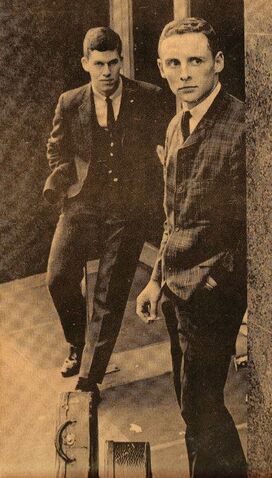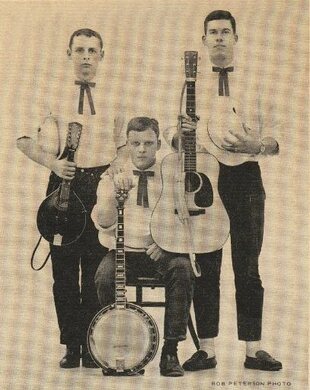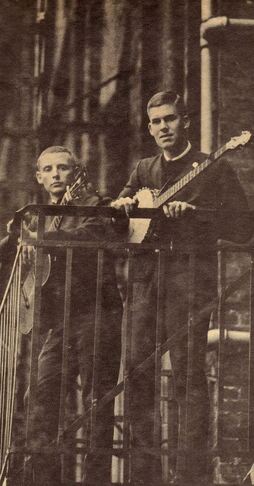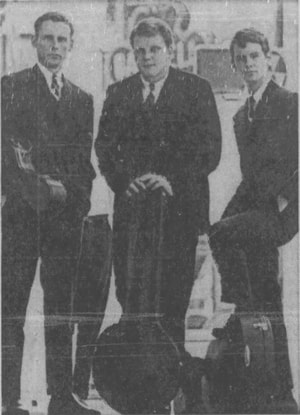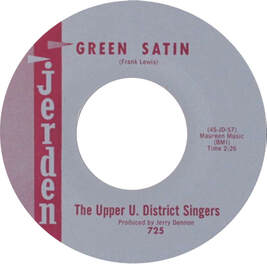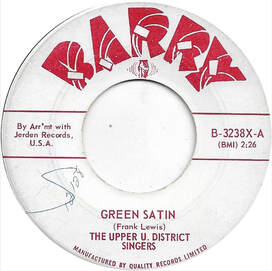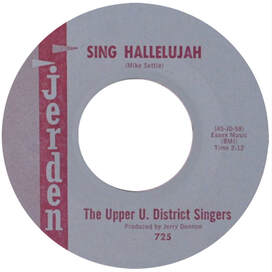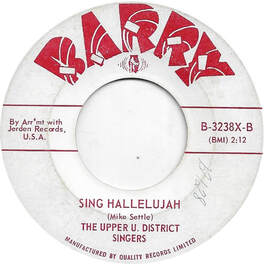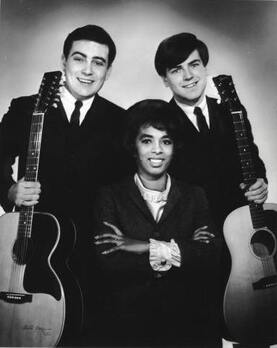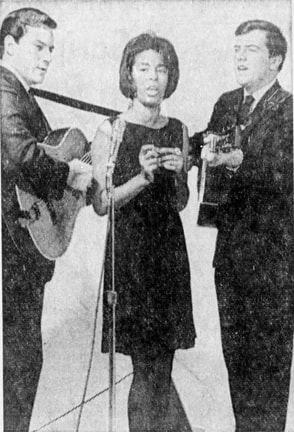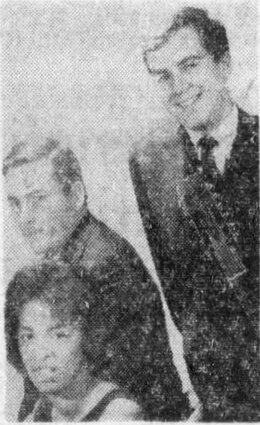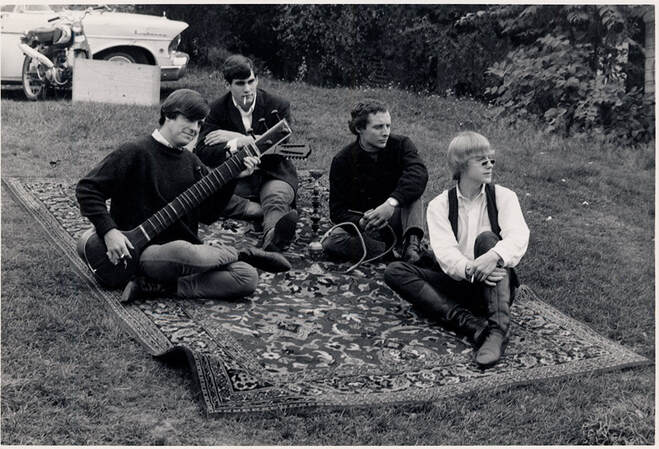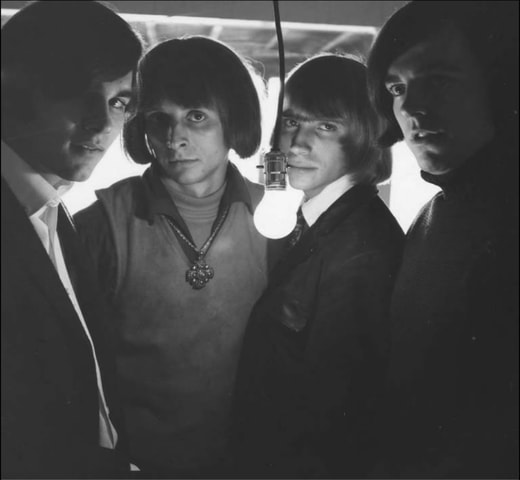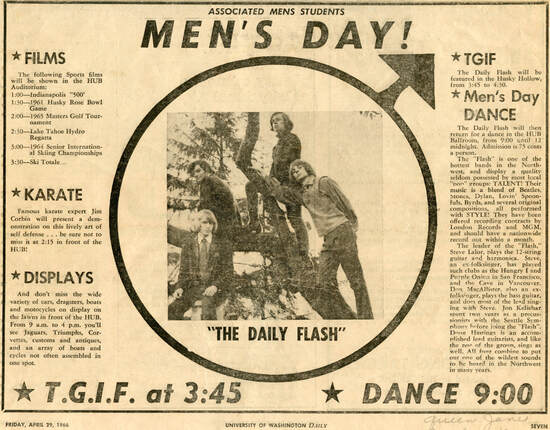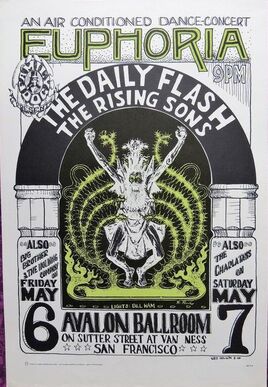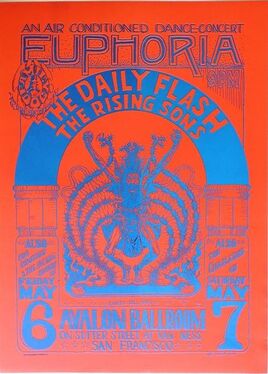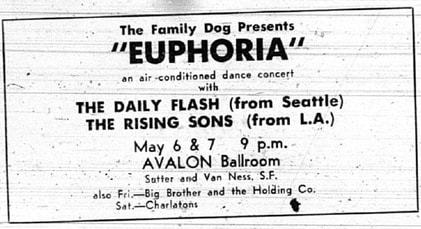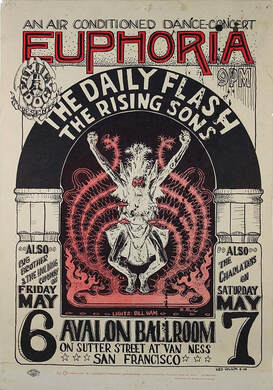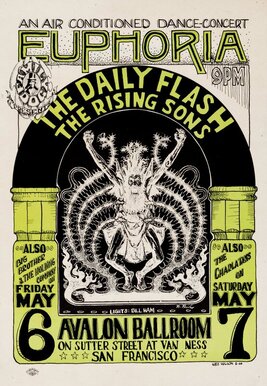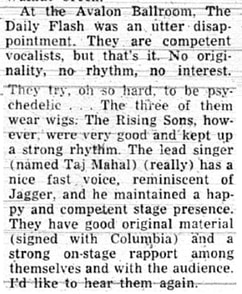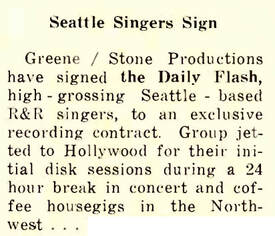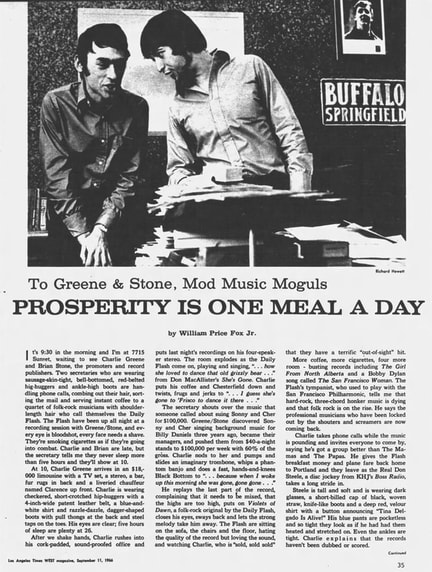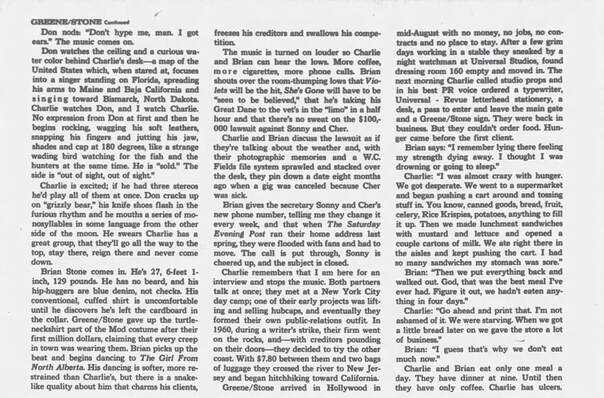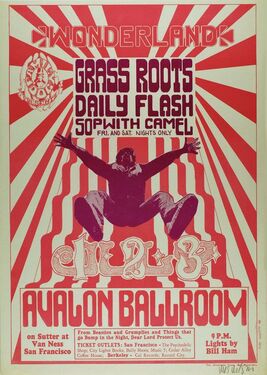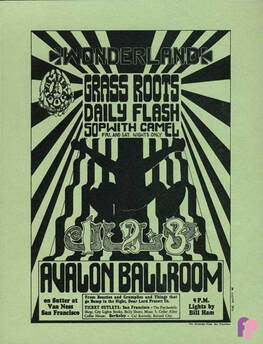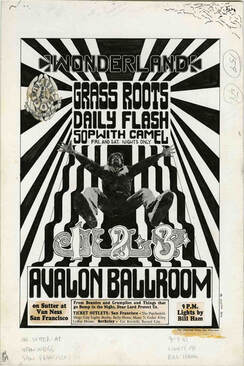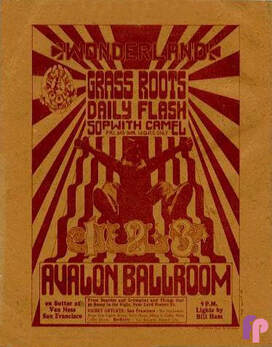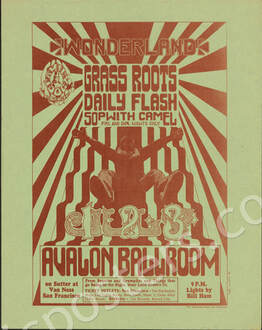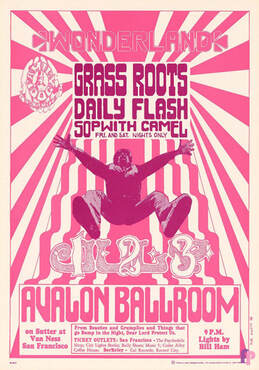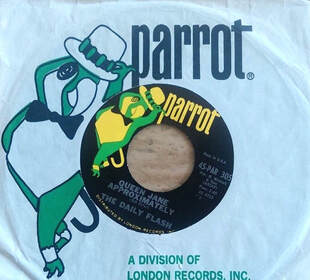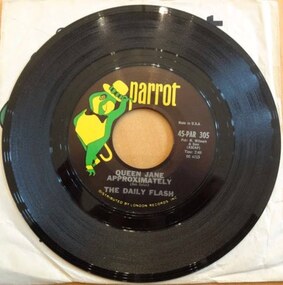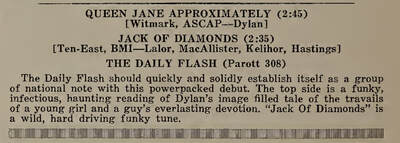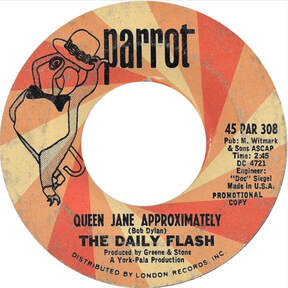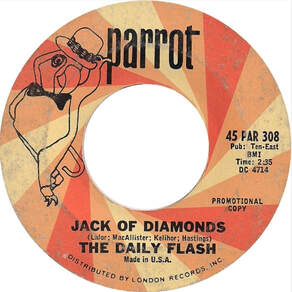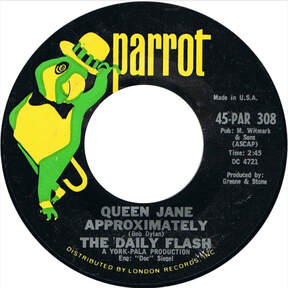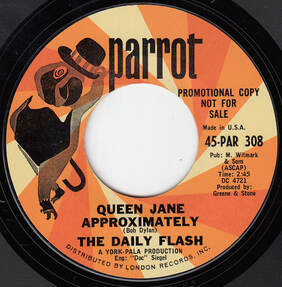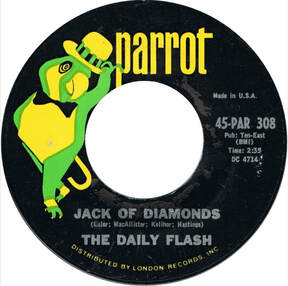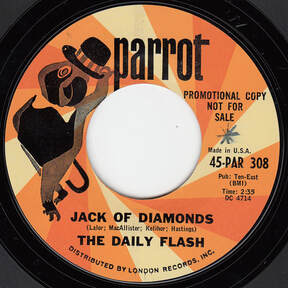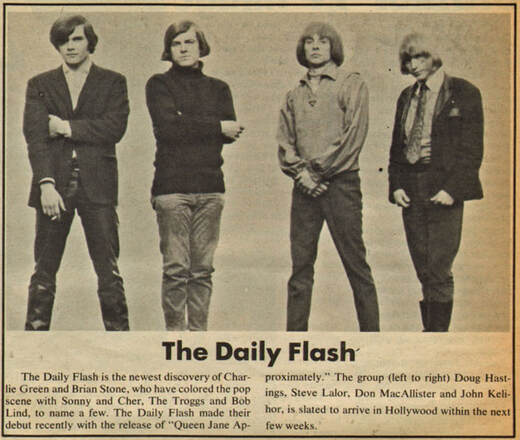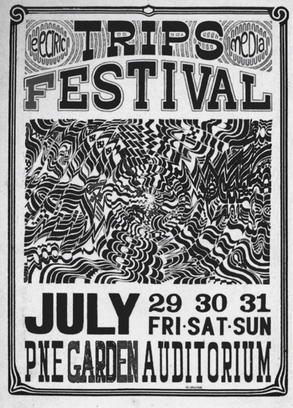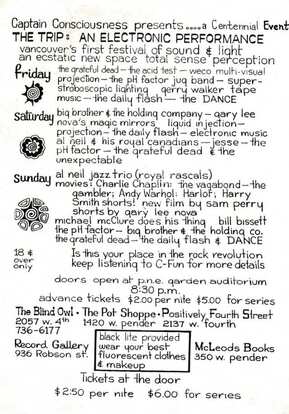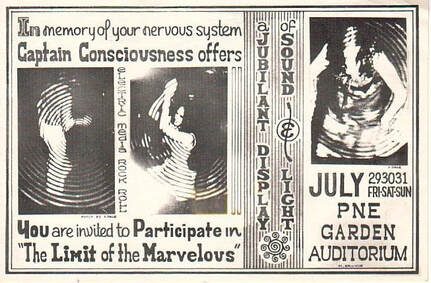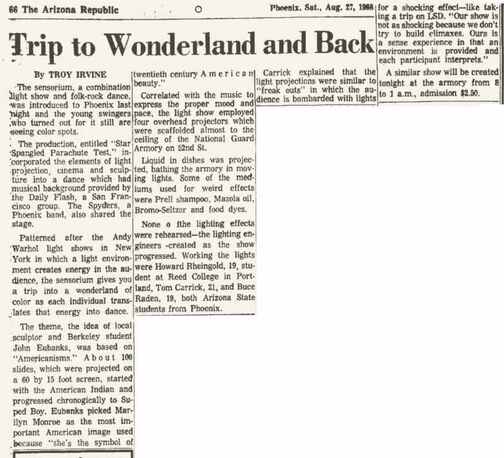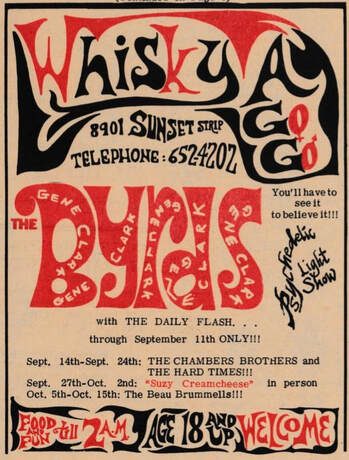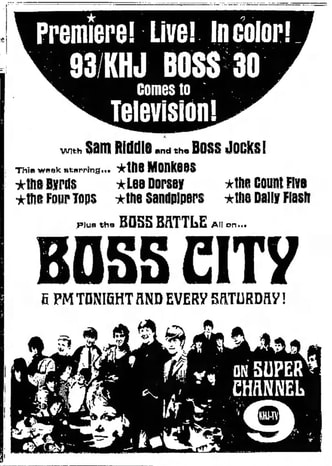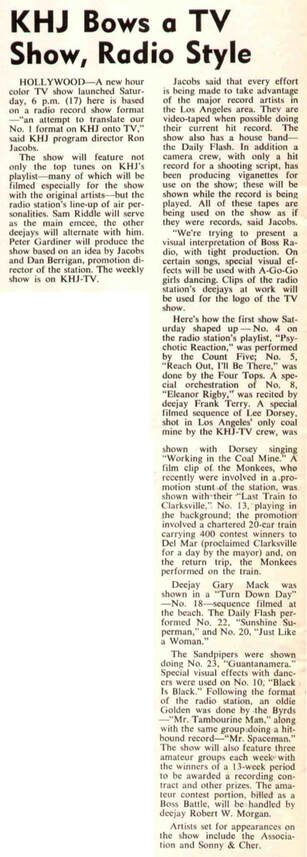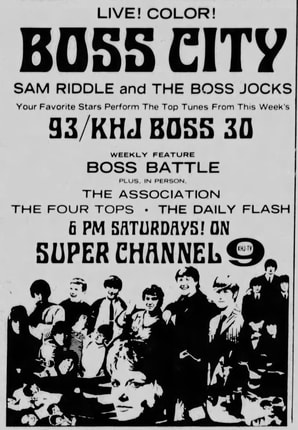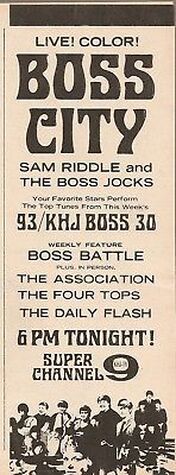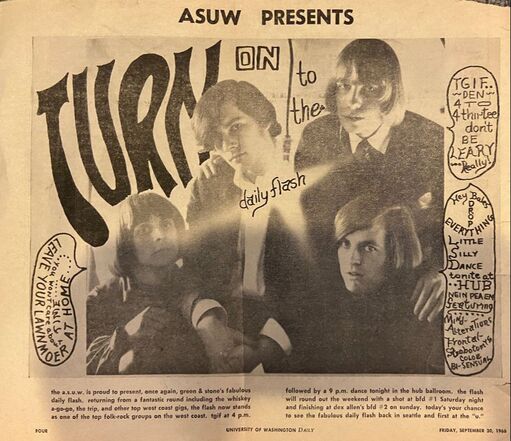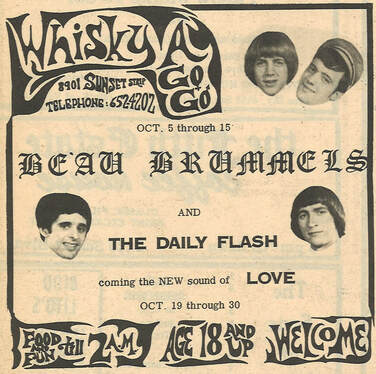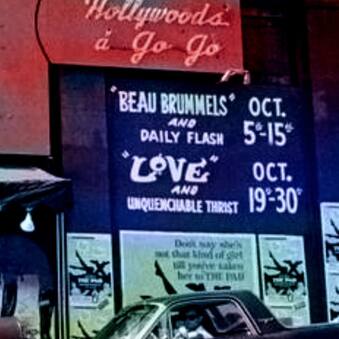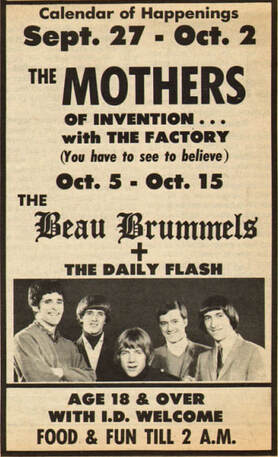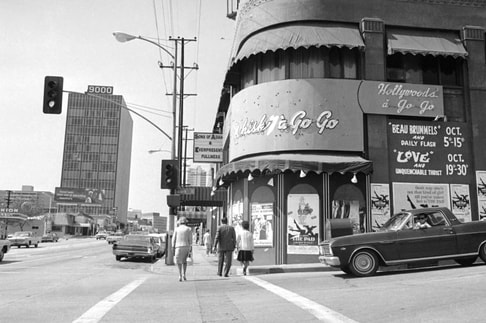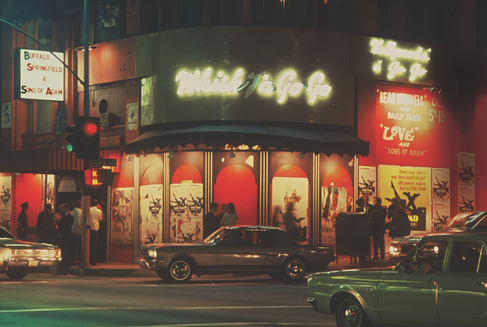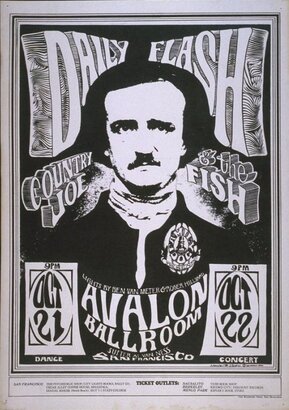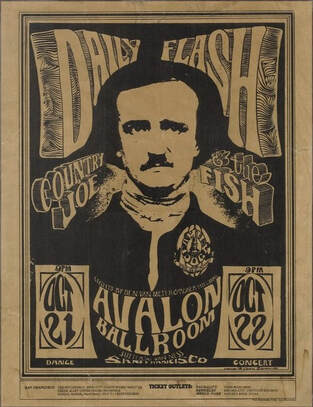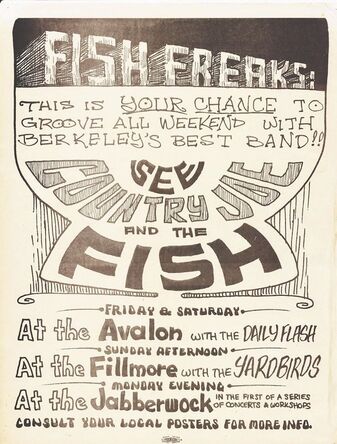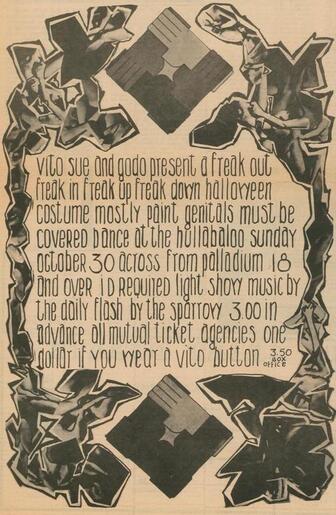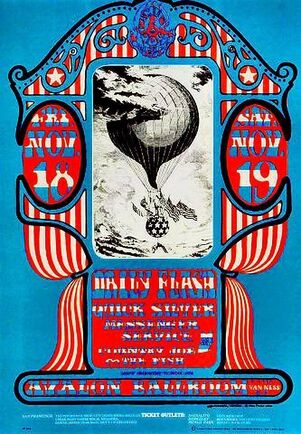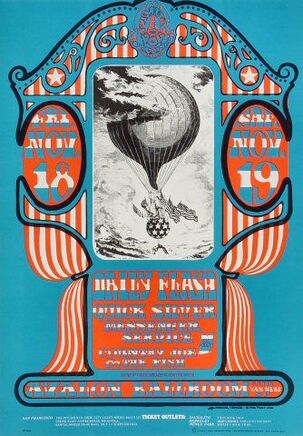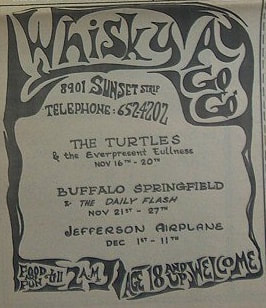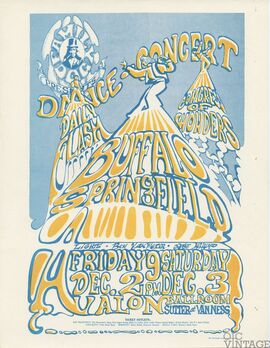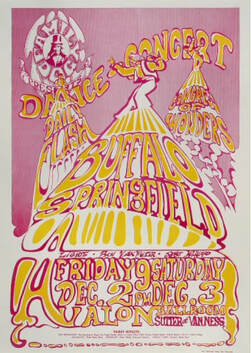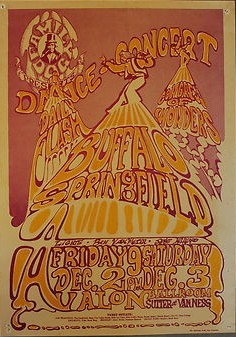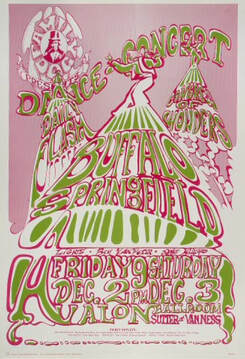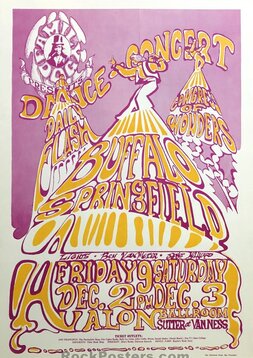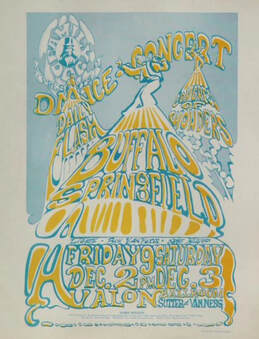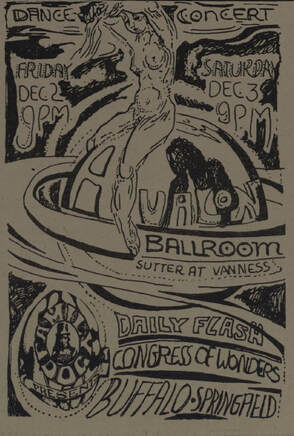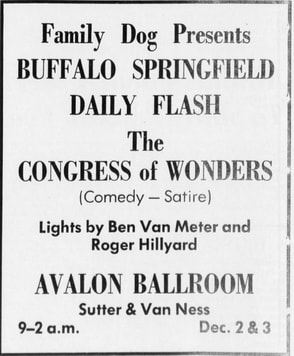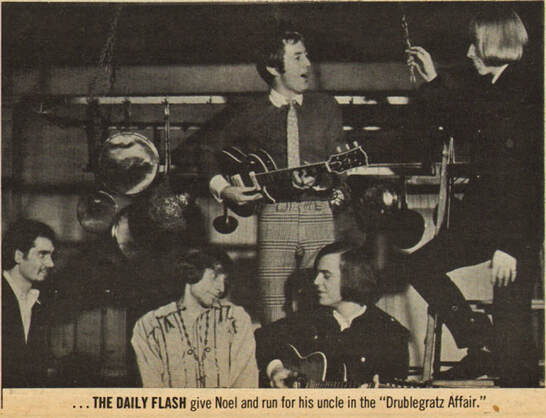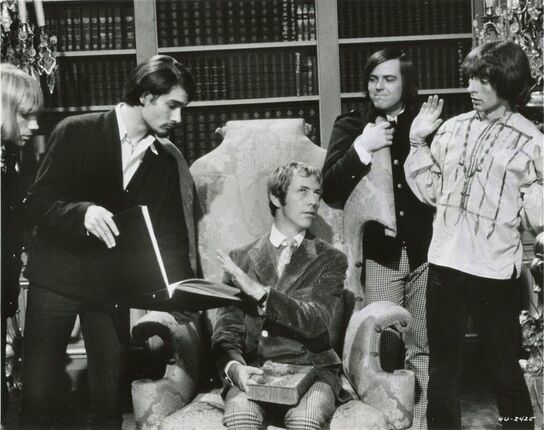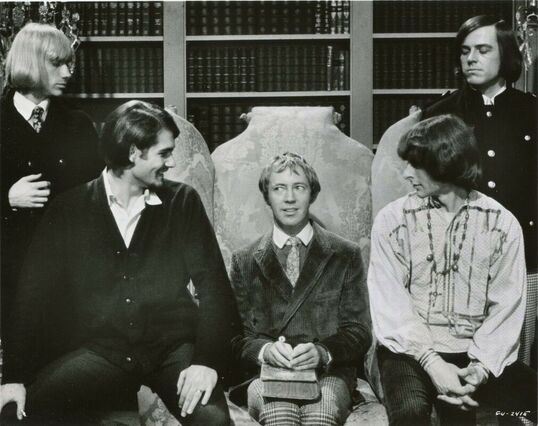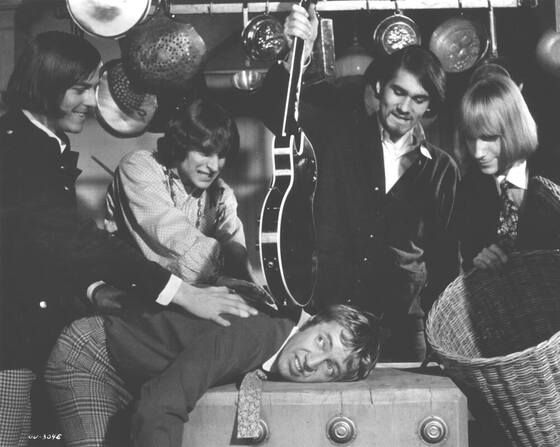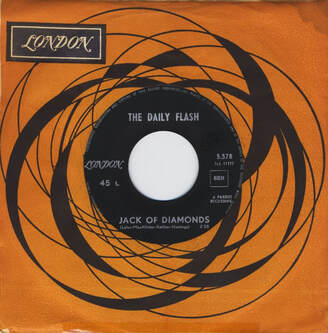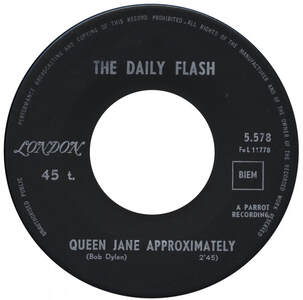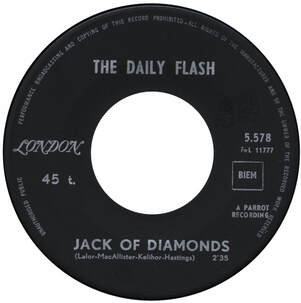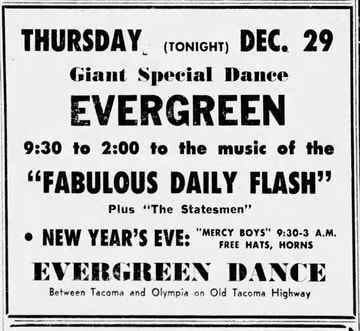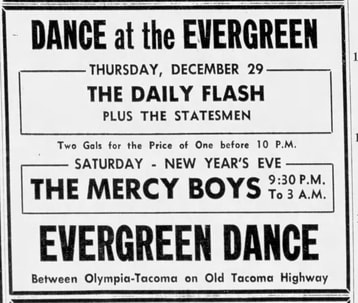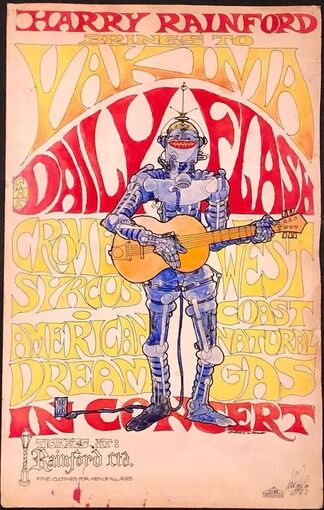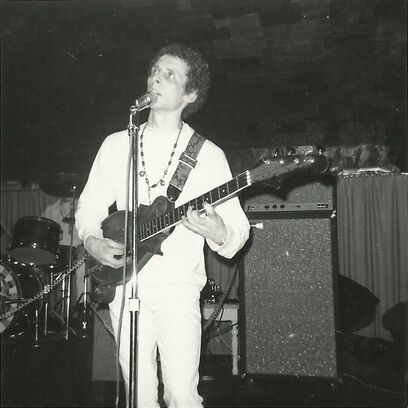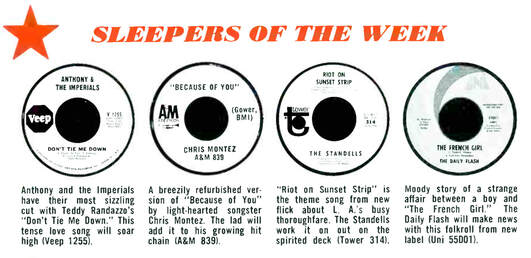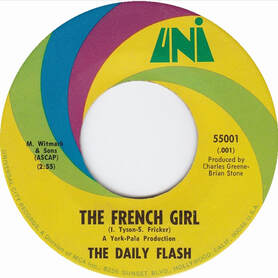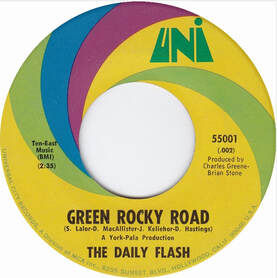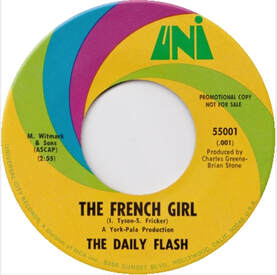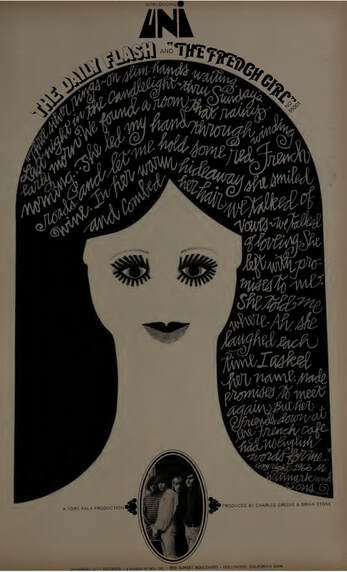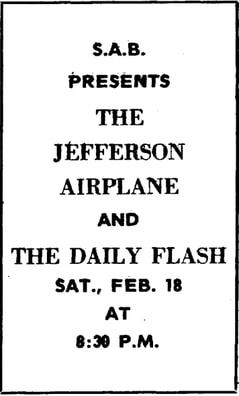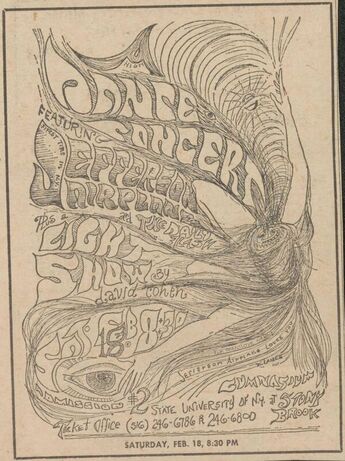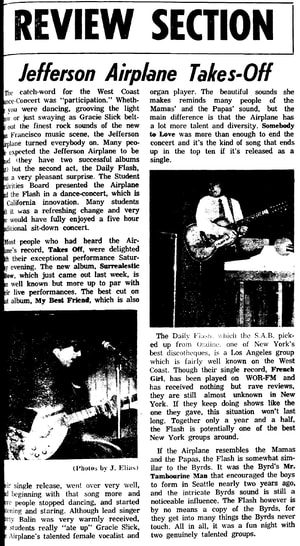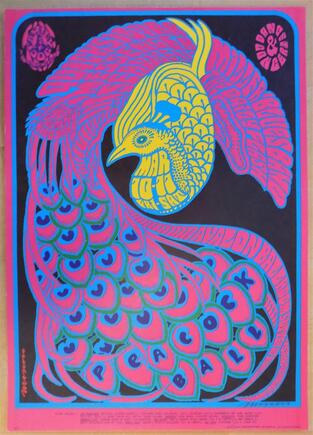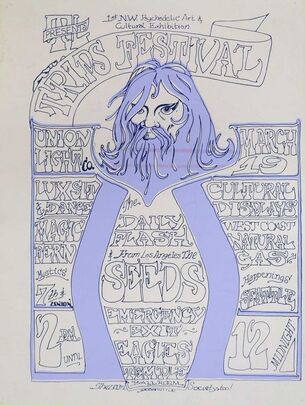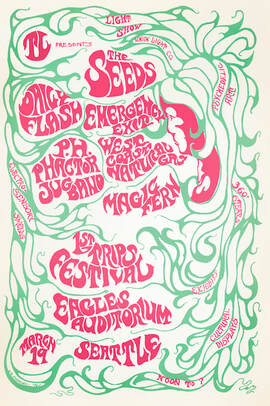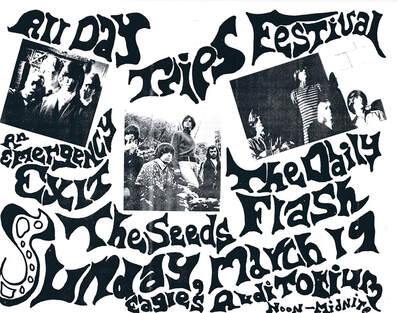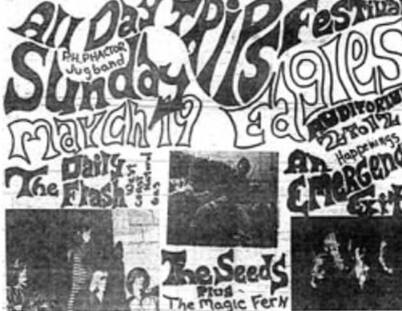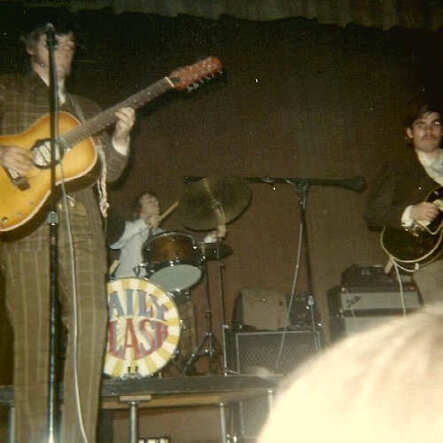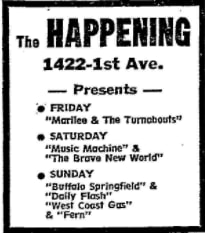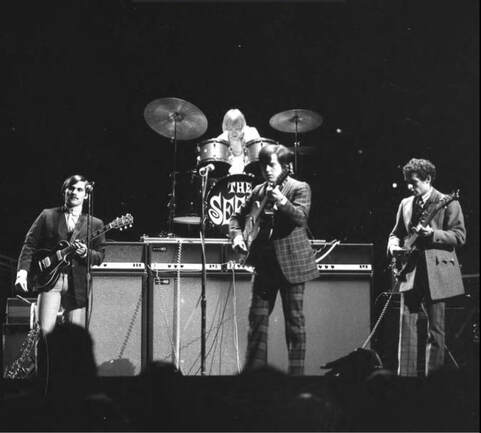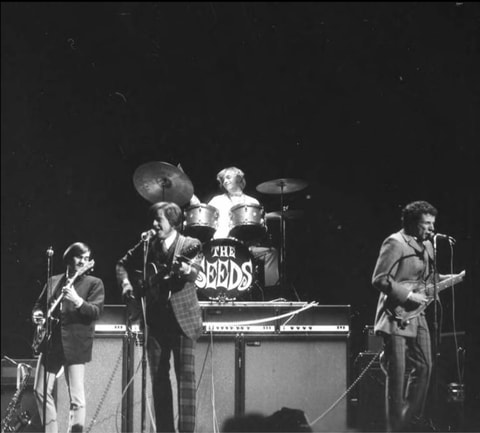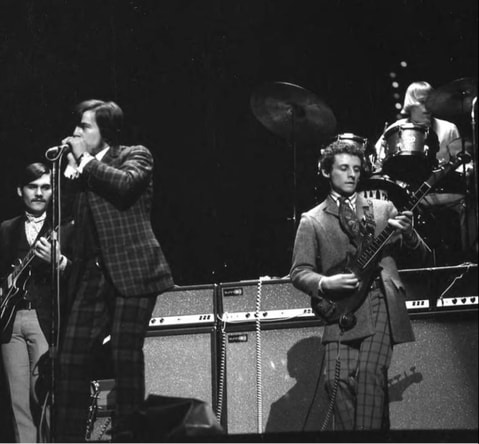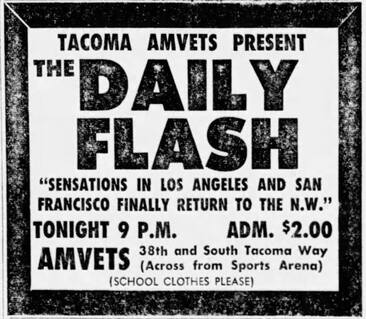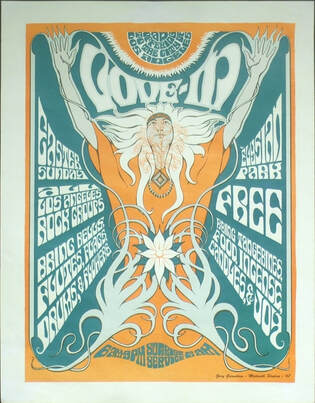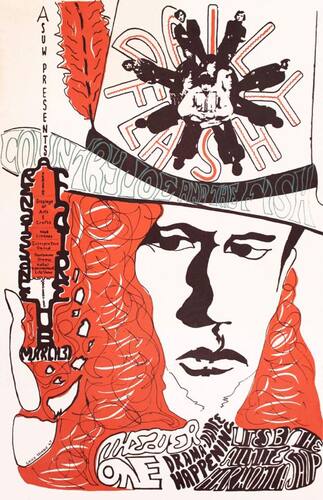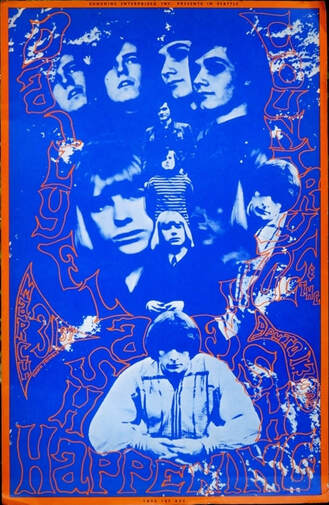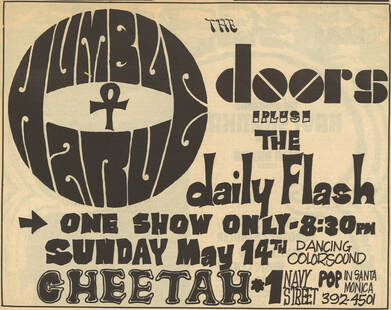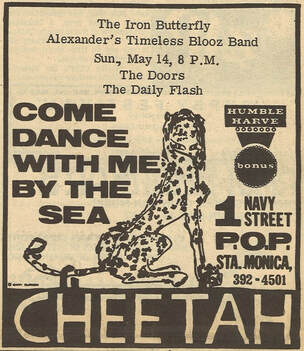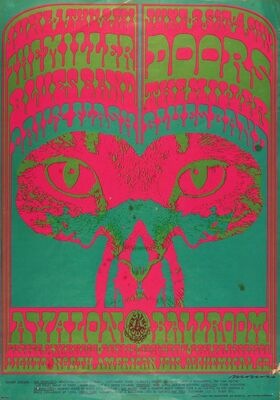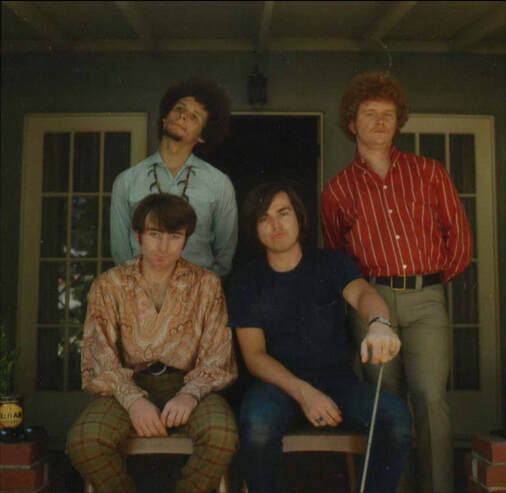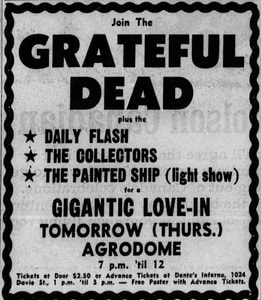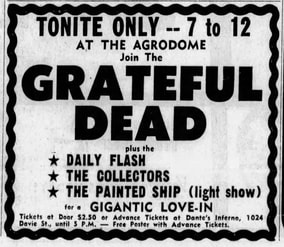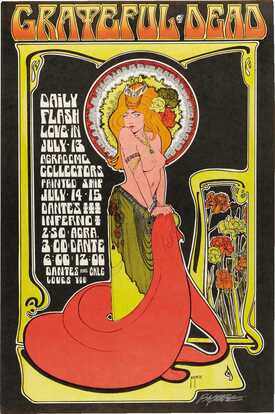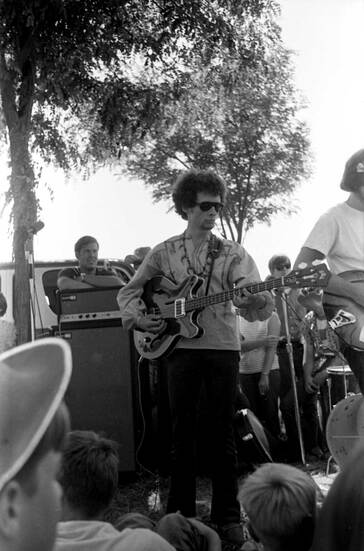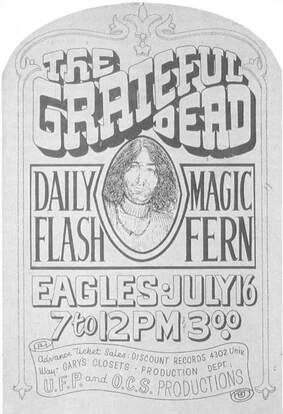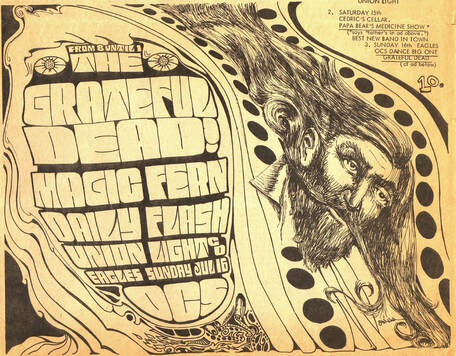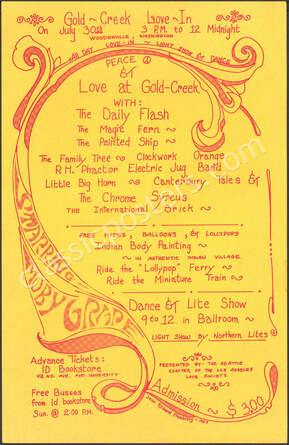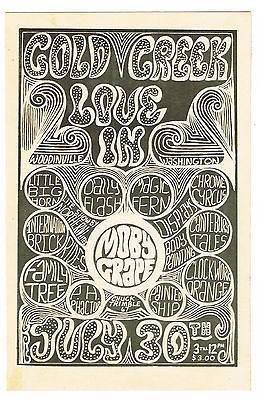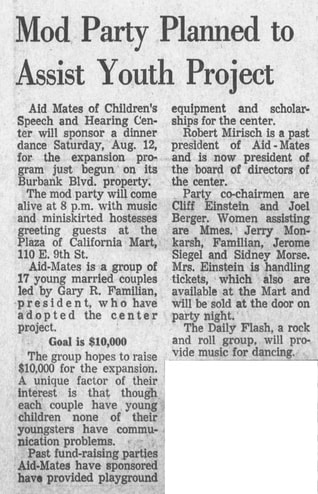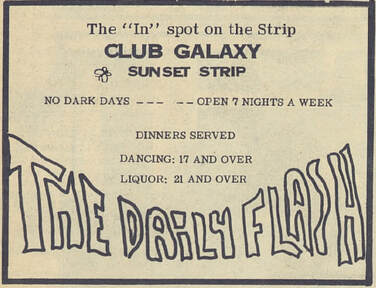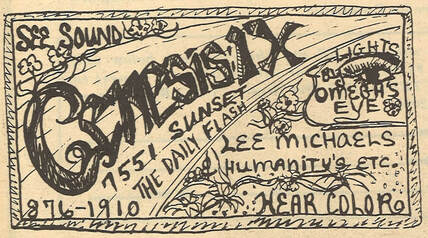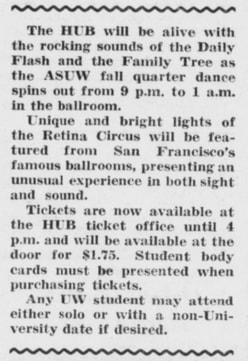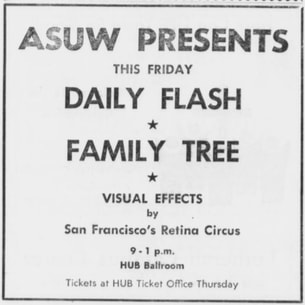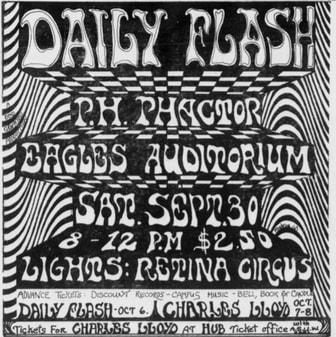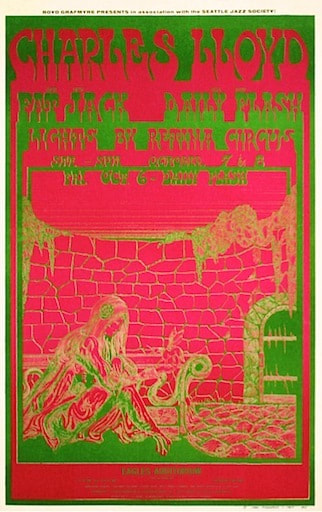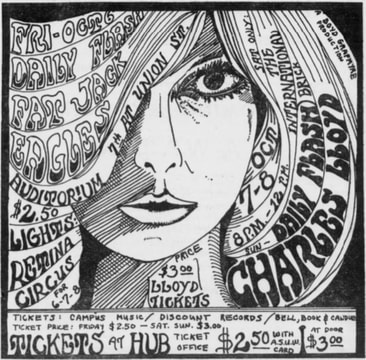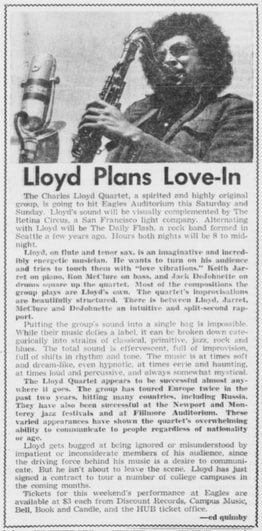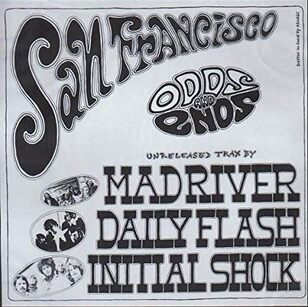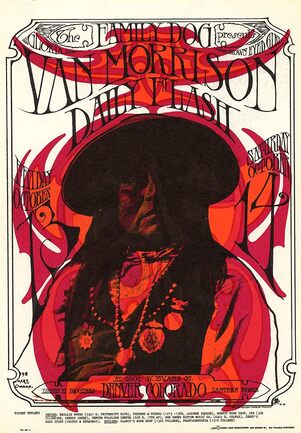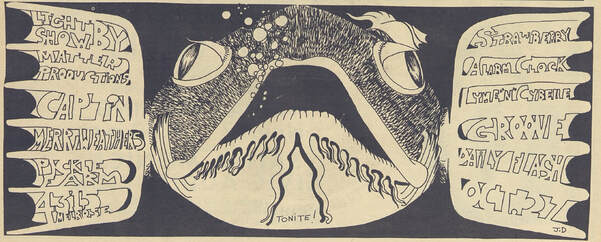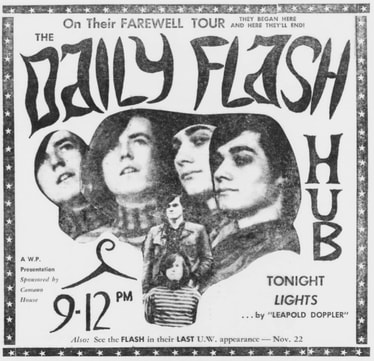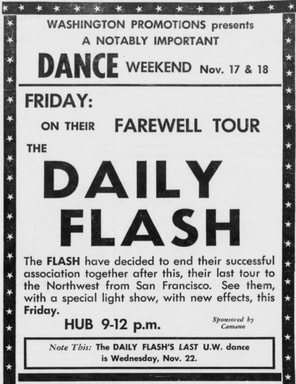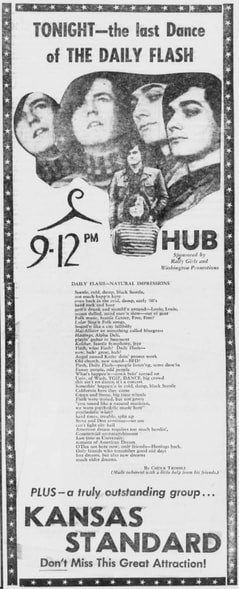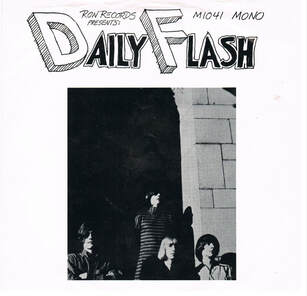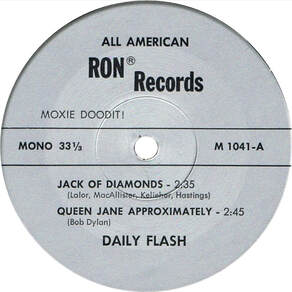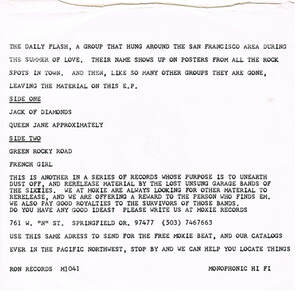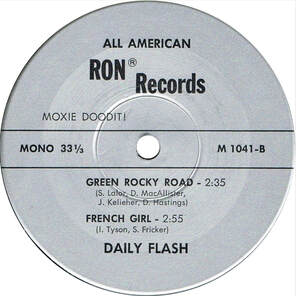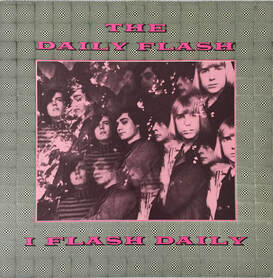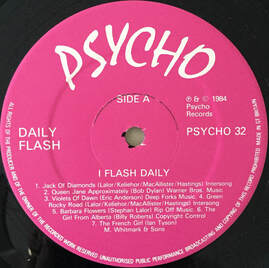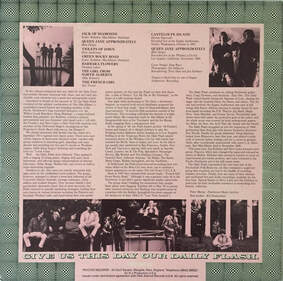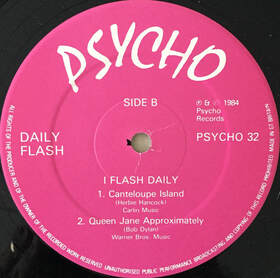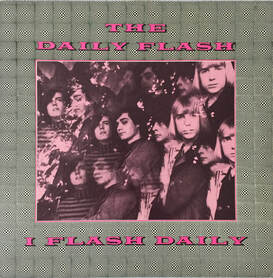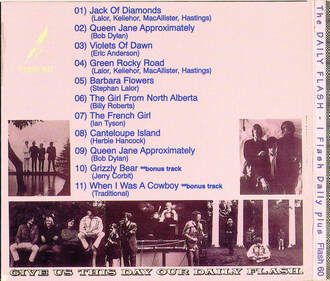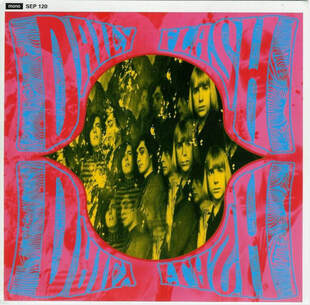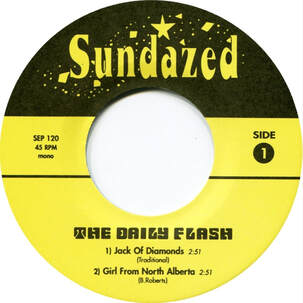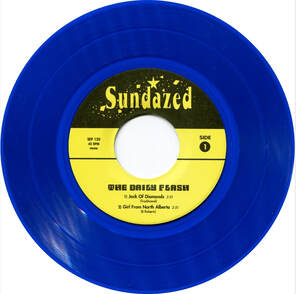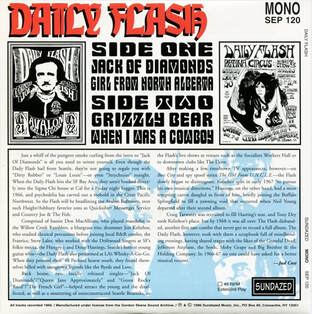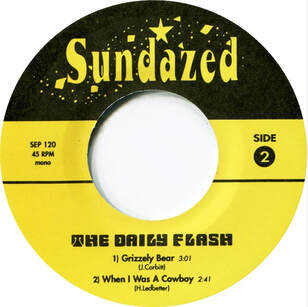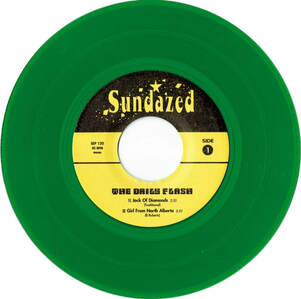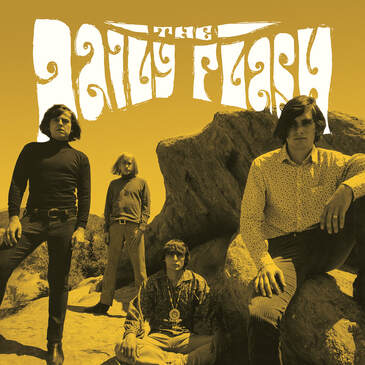If you enjoy what I have put together please consider donating any amount to support and help me to keep this valuable research going. Thanks!!
This day-by-day diary of the Daily Flash's live, studio, broadcasting, and private activities is the result of three decades of research and interview work by Bruno Ceriotti, but without the significant contributions by other kindred spirits this diary would not have been possible. So, I would like to thank all the people who, in one form or another, contributed to this timeline: Jon Keliehor, Doug Hastings, Steve Lalor (RIP), Nick Warburton, Ross Hannan, Corry Arnold, Gray Newell, Peter Blecha, Alec Palao, John Einarson, Traepischke 'Trapper' Graves-Lalor, Greg Shaw, Neal Skok, Phil McMullen, Izzy Young, Paul Gillingham, Ptolemaic Terrascope, Jim 'Harpo' Valley, Jive Time Records, Richie Unterberger, Walt Crowley, Richard Evans, Patrick 'The Lama' Lundborg (RIP), Jini Dellaccio (RIP), John Berg, Jon Kertzer, Jerry Fuentes, Michael Stuart-Ware, Craig Tarwater (RIP), Dennis R. White, Gregg Simpson, Dave Lucas, Christopher Hjort, William Price Fox Jr. (RIP), Rich Personett, Paul Drummond, Rob Branigin, Rick Chinn, Domenic Priore, Alex Casadei, Andrew Sandoval, John England, Joyce Haber, Greg Douglass, Rob Moitoza, Rick James (RIP), Gordon Skene, Jac Ttanna, Gregg Whitcomb, Jeanne Thompson, Gerald D. Winter, Eugene M. Nuss, Shindig!, KRLA Beat, The Ottawa Journal, Ukiah Daily Journal, The Times Colonist, The San Francisco Examiner, Pasadena Independent, Billboard, Helix, Pomona Progress-Bulletin, The Stony Brook Statesman, Long Beach Independent, Los Angeles Times, Seattle Post-Intelligencer, The Daily Californian, University of Washington Daily, Cash Box, The Post-Star, Village Voice, Charles Deering McCormick Library of Special Collections of Northwestern University Libraries, Los Angeles Herald Examiner, The Arizona Republic, Campus Crier, Seattle Daily Times, Record World, The Vancouver Sun, Tacoma News Tribune, Hyakem (Central Washington State College Yearbook), The Daily Olympian.
May 1963
The story of the Daily Flash, undoubtedly one of the greatest rock bands of the 60s emerged from the Pacific Northwest, begins in May '63 when an aspiring folk singer and guitar player from New York named Stephen John Patrick 'Steve' Lalor (b. Tuesday, September 12, 1944, Glens Falls, Warren County, New York) moved to Seattle, King County, Washington. "I came out west in January 1963, having dropped out of college in Ohio, landed in San Fancisco and stayed there through to the late spring," remembered Steve in an interview with Neal Skok for British psychedelic rock magazine Ptolemaic Terrascope in July 1992. "I was in the San Francisco scene for a while with Janis Joplin, Roger Perkins and the rest of them and... I just didn't care for San Francisco a lot, there was a hard, cold attitude in the city. Not really a very friendly place at all. [So] I decided to take an exploratory trip up to Vancouver, [Canada], stopped off in Portland, [Oregon], for a while and then because there was a good folk scene already in Seattle I decided to move there." Sometime later, Steve teamed up with two local aspiring folkies, Mike Hall and the not-yet famous Alice Stuart, and together they started performing under the (way too long) name of the Upper University District Folk Music Association Mandolin Society and Glee Club (shortened to the Upper University District Folk Music Association when their name appeared on some bills). The trio eventually scored a gig appearing regularly on the Seattle Hootenanny, a live folk show which was held every Wednesday evening from the outdoor stage of the Seattle Center's Amphitheatre (during the summer) and from the inside stage of the Seattle Center's Food Circus (formerly Armory) (during the winter). The show, which ran for about two hours and drew huge audiences, was also televised weekly on KING-TV Channel 5, from September 1963 to August 1964. "Shortly after I got to town the Seattle Center decided to put on an acoustic show, which was a huge success," confirmed Lalor. "It was turned into a weekly TV show that ran for a year and a half. I was on every show, and the pay from that was enough to live on."
December 1963 or January 1964: Audio Recording Inc., 170 Denny Way, Seattle, King County, Washington
The Upper University District Folk Music Association Mandolin Society and Glee Club headed into the late engineer Kearney Barton's studio and recorded a single for a local label called Jerden Records. The trio lay down an original penned in 1962 by an unknown duo composed by Pat Lewis (lyrics) and Frank Lewis (music), and titled 'Green Satin' (with Mike Hall on lead vocals, and the late Jim Manolides of the Frantics as "guest" on bass), plus a cover of 'Sing Hallelujah' (with Steve Lalor on lead vocals), a song written and recorded in 1961 by a folksinger and future member of the New Christy Minstrels named Michael Ward 'Mike' Settle. Both tracks were produced by Jerry Dennon.
February 1964
Alice Stuart and Mike Hall left the Upper University District Folk Music Association Mandolin Society and Glee Club to pursue a solo careers, and Steve Lalor replaced them with a couple of local female art students singers, an Afro-American named Lynn Brooks and another one named Courtney Branch, who had previously performed as a duo under the name of ‘Court and Lynn’ and 'Lynn & Courtney'. Steve had meet them when they shared the stage during the Seattle Hootenanny show.
February 1964
Steve Lalor meet Don MacAllister (b. 1942, Seattle), a singer and mandolin player of the Willow Creek Ramblers, a local modern bluegrass trio which started out in 1960 after Don teamed up with a singer and acoustic guitar player named Paul Gillingham. They performed as Don & Paul until 1962 when, after the addition of the late Philip J. 'Phil' Poth Jr. on 5-string banjo, they became the Willow Creek Ramblers. Later, in 1963, Paul dropped out to pursue a solo career and also to continue his studies at the University of Washington, and was replaced by a new singer/guitarist named Andy Aldrich. The new lineup started playing back and forth between Southern California and Canada for a year, until February '64 when they returned home in Seattle. "He and I would hang out together and sing stuff we'd learned," remembered Lalor in an interview with Neal Skok. "Everly Brothers songs and eventually Beatles songs because the harmonies were so natural. Don was an excellent singer and wasn't afraid to try anything." So, the seed of the future Daily Flash was officialy planted!
The story of the Daily Flash, undoubtedly one of the greatest rock bands of the 60s emerged from the Pacific Northwest, begins in May '63 when an aspiring folk singer and guitar player from New York named Stephen John Patrick 'Steve' Lalor (b. Tuesday, September 12, 1944, Glens Falls, Warren County, New York) moved to Seattle, King County, Washington. "I came out west in January 1963, having dropped out of college in Ohio, landed in San Fancisco and stayed there through to the late spring," remembered Steve in an interview with Neal Skok for British psychedelic rock magazine Ptolemaic Terrascope in July 1992. "I was in the San Francisco scene for a while with Janis Joplin, Roger Perkins and the rest of them and... I just didn't care for San Francisco a lot, there was a hard, cold attitude in the city. Not really a very friendly place at all. [So] I decided to take an exploratory trip up to Vancouver, [Canada], stopped off in Portland, [Oregon], for a while and then because there was a good folk scene already in Seattle I decided to move there." Sometime later, Steve teamed up with two local aspiring folkies, Mike Hall and the not-yet famous Alice Stuart, and together they started performing under the (way too long) name of the Upper University District Folk Music Association Mandolin Society and Glee Club (shortened to the Upper University District Folk Music Association when their name appeared on some bills). The trio eventually scored a gig appearing regularly on the Seattle Hootenanny, a live folk show which was held every Wednesday evening from the outdoor stage of the Seattle Center's Amphitheatre (during the summer) and from the inside stage of the Seattle Center's Food Circus (formerly Armory) (during the winter). The show, which ran for about two hours and drew huge audiences, was also televised weekly on KING-TV Channel 5, from September 1963 to August 1964. "Shortly after I got to town the Seattle Center decided to put on an acoustic show, which was a huge success," confirmed Lalor. "It was turned into a weekly TV show that ran for a year and a half. I was on every show, and the pay from that was enough to live on."
December 1963 or January 1964: Audio Recording Inc., 170 Denny Way, Seattle, King County, Washington
The Upper University District Folk Music Association Mandolin Society and Glee Club headed into the late engineer Kearney Barton's studio and recorded a single for a local label called Jerden Records. The trio lay down an original penned in 1962 by an unknown duo composed by Pat Lewis (lyrics) and Frank Lewis (music), and titled 'Green Satin' (with Mike Hall on lead vocals, and the late Jim Manolides of the Frantics as "guest" on bass), plus a cover of 'Sing Hallelujah' (with Steve Lalor on lead vocals), a song written and recorded in 1961 by a folksinger and future member of the New Christy Minstrels named Michael Ward 'Mike' Settle. Both tracks were produced by Jerry Dennon.
February 1964
Alice Stuart and Mike Hall left the Upper University District Folk Music Association Mandolin Society and Glee Club to pursue a solo careers, and Steve Lalor replaced them with a couple of local female art students singers, an Afro-American named Lynn Brooks and another one named Courtney Branch, who had previously performed as a duo under the name of ‘Court and Lynn’ and 'Lynn & Courtney'. Steve had meet them when they shared the stage during the Seattle Hootenanny show.
February 1964
Steve Lalor meet Don MacAllister (b. 1942, Seattle), a singer and mandolin player of the Willow Creek Ramblers, a local modern bluegrass trio which started out in 1960 after Don teamed up with a singer and acoustic guitar player named Paul Gillingham. They performed as Don & Paul until 1962 when, after the addition of the late Philip J. 'Phil' Poth Jr. on 5-string banjo, they became the Willow Creek Ramblers. Later, in 1963, Paul dropped out to pursue a solo career and also to continue his studies at the University of Washington, and was replaced by a new singer/guitarist named Andy Aldrich. The new lineup started playing back and forth between Southern California and Canada for a year, until February '64 when they returned home in Seattle. "He and I would hang out together and sing stuff we'd learned," remembered Lalor in an interview with Neal Skok. "Everly Brothers songs and eventually Beatles songs because the harmonies were so natural. Don was an excellent singer and wasn't afraid to try anything." So, the seed of the future Daily Flash was officialy planted!
Early April 1964
The Upper University District Folk Music Association Mandolin Society and Glee Club's first and only single, 'Green Satin / Sing Hallelujah' (Jerden 725 (US) / Barry B-3238X (Canada)), was released in the US and Canada. Nedless to say, the group name was way too long for the disc label, so it was truncated to The Upper U. District Singers. By the way, right after the release of their single in Canada, the trio headed to Vancouver to promote it with a series of gigs.
June ??, 1964
The up-and-coming folk duo with Don MacAllister came to an abrupt end when "I moved back to San Francisco and had a folk group which was based at The Hungry I [in North Beach]," remembered Steve Lalor in an interview with Neal Skok. As a matter of fact, after replacing Courtney Branch with a male singer and guitar player from South Carolina named Billy Roberts (yes, that Billy Roberts, the author of 'Hey Joe'), the Upper University District trio moved to the 'Golden City' where they started performing regularly under the new name of the Driftwood Singers. Meanwhile, in Seattle, Don MacAllister continued to play with the Willow Creek Ramblers at least until late August '64 when they disbanded for good.
Late June - Late August 1965
After playing back and forth between San Francisco, Seattle, and Vancouver in Canada, for a year, the Driftwood Singers disbanded in late June '65. The folk revival was died at that point, and Steve Lalor, duly inspired by the new emerging folk-rock sound of the Byrds, was ready to "goes electric" and form a new band that would follow the same musical path. In San Francisco, where he lived at the time, many new Byrds-esque bands were emerging from the local scene, but for Steve the right proposal for starting a band actually came from Seattle, from his old friend Don MacAllister. "MacAllister suddenly turned up in San Francisco and said to come back to Seattle," confirmed Lalor in an interview with Neal Skok. "He told me he'd found this great drummer named Don Stevenson who sang as well, I was gonna love him. This sounded OK to me, so I put some things together and told him I'd see him in Seattle in a few weeks." It was probably in July, or early August at the latest, that Don arrived in Frisco to "catch" Steve and, before returning home, the pair take a trip and stop in Virginia City, Nevada, to hang out with the Charlatans who at the time were playing as house band of the infamous Red Dog Saloon. It turned out that Steve and Don knew the saloon's barmaid and book keeper, an aspiring folk singer and guitar player from Seattle named Lynne Hughes. Anyway, after the trip, Don returned immediately in Seattle, while Steve still needed some weeks in SF to "packed up my shit and [then] got out of town." It was at that point, probably on August 20 or 21, that Steve attended a solo gig of his friend and former bandmate Billy Roberts at the Matrix club in the Marina District. That night, Roberts opened for an up-and-coming folk-rock band called Jefferson Airplane. “The night I heard them at the Matrix, the band couldn’t have been more than a few months old,” remembered Lalor in an interview with Richie Unterberger for the latter's book Eight Miles High: Folk-Rock's Flight from Haight-Ashbury to Woodstock (Backbeat Books; 2003). “They still had the old string bass player who did Al ‘Jazzbo’ Collins bits while Paul [Kantner] struggled to keep his electrified acoustic 12-string in tune. They had a terrible time staying in tune. Marty [Balin], who I knew loosely from the folk scene, seemed very proud of the fact that the band did a very accomplished job of ‘Midnight Hour.’ It seemed to mean a lot to him that his ragtag bunch of white folkies could ‘get down.’ I liked the look of the acoustic bass, but the sound didn’t cut it. I don’t remember who was drumming, but it was overpowering the bass. Paul and Marty were still trying to control their guitar and amp sounds. I asked Marty how solid he was on all the band personnel, hoping for a potential opening. Marty said he was very happy with everybody in the band.” So, with zero chance to join Jefferson Airplane soon or later, Steve finally headed north to Seattle at the end of August.
Late August 1965 - Early September 1965
Steve Lalor returned to Seattle and "found there was no Don Stevenson… instead there was a Jon Keliehor," he remembered in an interview with Neal Skok. "The story was, Keliehor was with the musicians that eventually went to make up the Moby Grape - the Frantics. And when the Frantics went to California, Keliehor was involved in an auto accident in Eugene, [Oregon]. He left his spleen in Eugene as a matter of fact." "One summer day, Steve and Don pulled up in front of my mother's Tudor style house on East Blaine Steet where I was recovering from an auto accident on the way to the Bay Area with the Frantics," confirms Jon Keliehor. "They had learned that the original drummer they had in mind, Don Stevenson, had now replaced me in the Frantics. I had little idea of they they would simply pay me a visit, but they hoped I would consider working with them instead of any other plans I might have. Hence came a crucial fork in the path of destiny, which I followed without hesitation. We talk, and decide that it would be interesting to explore American and British folk music, incorporating some of the influences heard via Yardbirds, Beatles, etc." "Anyway, I had been really looking forward to being in a group with this Don Stevenson, but that wasn't to be and as it turned out Keliehor was the secret magic ingredient that makes groups happen...," continued Lalor, "see, he knew music better than the rest of us and he was game to try anything and lead us down the road." "When I met Steve and Don, apparently I said, 'Very nice to meet you', and soon asked Steve where he was staying," also recalls Keliehor. "'Perhaps you don’t have a place to stay?' Steve said that he was staying with people he knew. 'I can stay there a while, but they probably don’t want me to stay there a long time.' It seems that I said, 'Anytime you’re ready, you can move in at my mom’s house.' In short order Steve came back, moved in with my mom, and Don also stays for a brief spell." "When I got up to Seattle I met Keliehor and as a matter of fact moved in with him and his mother for a couple of months, [and] MacAllister lived there at one point too," confirmed Lalor. Anyway, after switching from acoustic to electric guitar and from mandolin to electric bass respectively, Steve and Don started rehearsing and build repertoire with their new drummer friend Jon (b. Jon Dennis Keliehor, Saturday, October 18, 1941, Lincoln, Lancaster County, Nebraska), at the "Mother Keliehor's Home for Wayward Boys, as we dub the house at that point," recalls Jon. "While I was convalescing in Seattle, unable to play the drums, Don and Steve began to work out vocal and guitar ideas, and favourite tunes across a fairly wide range of influences from American and British folk music, to current developments such as the Byrds and Yardbirds," adds Keliehor. "I introduced them to R&B and Jazz tunes that I felt could easily be in their grasp, could even stretch them a little. I thought that they would benefit from improvising on harmonically challenging material. They took up the challenge. I was right. We listened to music from many diverse artists, even Ravi Shankar, Bulgarian female singers, Miles Davis, Herbie Hancock, Grachan Moncur III. We brought these music influences into performance."
UNNAMED REHEARSAL TRIO (LATE AUGUST 1965 - EARLY SEPTEMBER 1965)
1) Steve Lalor lead vocals, 12-string guitar, 6-string guitar, mouth harp
2) Don MacAllister vocals, bass, mandolin
3) Jon Keliehor drums, tambourine
1) Steve Lalor lead vocals, 12-string guitar, 6-string guitar, mouth harp
2) Don MacAllister vocals, bass, mandolin
3) Jon Keliehor drums, tambourine
Early September 1965
The unnamed trio added the fourth and last piece of the puzzle, an aspiring rock lead guitar player named Douglas Stuart 'Doug' Hastings (b. Friday, June 21, 1946, Seattle). Doug, who had spent that summer working at a gas station looking forward to returning to college for the fall semester, knew Don MacAllister because he was a fan of the Willow Creek Ramblers, a sort of band mascot, and Don at the same time knew that Doug played electric guitar and that he wanted badly to be part of a rock 'n' roll band. "He was the one that said, come around and play a little bit," confirms Hastings. "MacAllister mentioned him to me, but no immediate decision was made," pointed out Steve Lalor in an interview with Neal Skok. "We looked around for guitar players and decided that Doug Hastings was the guy whose ear was most receptive. So many of the guitarists of the time were into the big thing of the day, that early 'Seattle Sound', and although we liked that we didn't want anybody who was so far gone in that direction that they couldn't relate to the acoustic guitar or to melodic music. Doug seemed to fit the mould real well, he was willing to learn new directions... and he sure got them with us!" "The furthest away from the rest of us was our guitarist Doug Hastings," added Lalor about the new kid in the band. "Doug was very young at the time he joined the Flash, he was still in college and was very much into the Dynamics, he was listening to those guys a lot. He was playing in a lot of nameless garage bands [actually only one called the Dynatones] and would sit in with the Dynamics whenever he could. He knew their guitar player Harry Wilson so he hung out with Harry and played when he got the chance to." "We crossed paths with Doug sometime after, and the four of us simply felt comfortable, and intrigued with one another," also recalls Jon Keliehor. "Owing to his solo and group experience, Steve Lalor seemed to be a natural leader and organiser, but later he said of Don: 'McAllister was extremely ambitious. He was... all the ambition of the Daily Flash'." "We got together on a very casual basis and just started putting songs together," also recalls Hastings. "And then the summer was over, and I went back to college, because that's what you had to do. Two weeks, and I said to myself, 'I'm leaving'."
UNNAMED REHEARSAL BAND (EARLY SEPTEMBER 1965 - NOVEMBER 1965) / THE DAILY FLASH #1 (NOVEMBER 1965 - MAY ??, 1967)
1) Steve Lalor
2) Don MacAllister
3) Jon Keliehor
4) Doug Hastings lead guitar, vocals
1) Steve Lalor
2) Don MacAllister
3) Jon Keliehor
4) Doug Hastings lead guitar, vocals
November 1965: The Cave Theatre Restaurant, 626 Hornby Street, Vancouver, British Columbia, Canada
The unnamed band was finally christened the Daily Flash. "I came up with the name," recalls Jon Keliehor. "It came to my mind an hour or two before our first performance at a folk club in Vancouver. I can't recall the name, but I believe Steve had played there in his folk-music days." "Once at the venue, we realised that we should have a group name," he continues. "Who are we? I mentioned that we were a bit like a daily newspaper, bringing the latest news in folk music. Not only new but different, an 'illuminated music' like in a LSD flash. That seemed to describe the situation, and the words 'Daily' and 'Flash' were agreed upon instantaneously." Anyway, although Keliehor does not remember the name of the venue where the Daily Flash played their debut gig, I'm confident that it was the Cave, at least because this was the last place where Steve Lalor played the last time he was in Vancouver, in June '65, with the Driftwood Singers.
November 1965: unknown venue, Everett, Snohomish County, Washington
After their debut gig in Canada, this one somewhere in Everett could be at least their first gig in the Washington state. "Our first [sic] gig was at a club in Everett; we have at most 15 songs in the repertoire. The girls seem to like us," recalls Doug Hastings. By then, according to Steve Lalor, the band's early repertoire included a couple of Bob Dylan's songs, 'Chimes of Freedom' and 'It Takes a Lot to Laught, It Takes a Train to Cry', and a couple of unknown Jesse Colin Young's songs from his first two solo albums. Eventually the repertoire would expand with a lot of jazz and blues instrumentals that could include such as Chico Hamilton's 'Lady Gabor', Herbie Hancock's 'Cantalupe Island', Julian 'Cannonball' Adderley's 'Tengo Tango', Freddie King's 'The Stumble', and Grachan Moncur III's 'Air Raid'. "This kind of rock/jazz fusion was the very antithesis of the folk scene, we would be doing all these three-chord melody songs and then suddenly we'd be doing choral jazz changes. Groups just weren't supposed to be that eclectic," reflected Lalor in an interview with Neal Skok. "Our feeling was, we banded together to play for the masses, and the bigger the masses got the better it was. If they liked us and were willing to give us a listen, we'd throw some different ideas at them." "We did very little original material at any point," he added. "We re-did obscure songs, we re-did folk and we re-did blues. It was all stuff nobody had heard of."
November 1965: Painter's Hall, University District, Seattle, King County, Washington
"At Painter's Hall, Don hand-draws/colors posters which we post around the U District. We start to attract an audience," recalls Doug Hastings.
November 1965: Carpenters Hall, 4445 California Avenue, The Junction, downtown West Seattle, Seattle, King County, Washington
"By 1965 we were really out there playing some gigs, and again we ran into the problem that people weren't willing to take a chance on the different style of music that we played," remembered Steve Lalor in an interview with Neal Skok. "Often we would have to put on our own gigs, rent out the Carpenters Hall downtown and just let people know it was going on. Our gigs soon became the focal point for the hip scene in Seattle."
November 1965: Freeway Hall, 3815 5th Avenue, just west of Interstate 5, near the north shore of Lake Union, Wallingford, Seattle, King County, Washington
Usually used as the headquarters of the Seattle branch of the Socialist Workers Party at that time, the Freeway Hall was also rented for about ten bucks, more than once, by the Daily Flash, so they can put their own show there for, like, fifty people at most (yeah, you read right, the place was that small).
November 1965: Phil and Vivian Williams house, Seattle, King County, Washington
The Daily Flash recorded a cover of Bob Dylan's 'Let Me Die In My Footsteps', in the house of the late pioneering musician, promoter, and record company owner, Phil Williams, and his wife, national champion fiddler Vivian Williams. "The first of our earliest recorded songs, 'Let Me Die In My Footsteps', shows us from whence the voices of the group emerged," recalls Jon Keliehor. "Amidst a battery of folk gems and anthems, we were searching for a direction we hoped would reach out to the masses. This is a fossil recording of folk-rock intellingence, emerging from Seattle during 'The Spring of Love'." "The only known recording of this session is on acetate," adds Jon.
November - December 1965
Jon Keliehor got sick and the rest of the band has to look for something to do. “Keliehor, upon arriving back in town [from Canada], promptly contracted hepatitis through not taking care of himself,” remembered Steve Lalor in an interview with Neal Skok. “He was recovering from losing his spleen, remember. He could maybe get through a twenty-minute set, so we carefully chose where we could play and showcase ourselves. We spent the rest of the time creating a mystique, putting up posters for non-existent gigs and that sort of thing. We were being talked about in the papers before we'd even played a gig, being mentioned as the alternative group!” Meanwhile, during the band's brief hiatus, Doug Hastings gets a job washing dishes at Pizza Haven in the University District of Seattle, near the University of Washington, where he learns to hate tomato sauce; Steve Lalor played solo gigs, and last but not least, Don MacAllister was arrested for drug possession! “Seattle Police Department were always on our backs,” also recalled Lalor. “Our band vehicle was a '48 Packard hearse and we were forever getting tickets on it, and our place was busted because by this time we had made enough noise to be popular and therefore considered dangerous by them.” Allegedly, MacAllister went to jail for one or more days because a 17-year-old fan from Bellevue named Jeanne Thompson recalls that she and her friends contributed to the bail of Don by paying 50 cents for a ‘fringie’ button. “I just bought a fringie button to help spring a singing group called the Daily Flash. They have real talent and they couldn’t use it in jail,” said Jeanne in an interview she did back then and that later surfaced into Gerald D. Winter & Eugene M. Nuss’ book The Young Adult - Identity and Awareness (Scott, Foresman and Company; 1969). “I have surmised that Don was at the wrong place at the wrong time, wherever that was,” reflects Jon Keliehor. “He certainly wasn’t very talkative about it, and after his conviction, probably with some plea bargaining, he was released and had to report regularly to a parole officer. He couldn’t leave the state, yet managed to sneak across into Canadian to play the Trips Festival in July ‘66. I even don’t know what the legal arrangement was when we went to play in San Francisco the first time in May ‘66.” “Having cut his hair short for a court appearance and parole visits, he bought a wig for the stage,” concludes Keliehor.
Friday, November 19 - Saturday, November 20, 1965: The Door, 1818 7th Avenue, Seattle, King County, Washington
Advertised as 'special appearance by Steve Lolar [sic] of the Daily Flash', Steve Lalor played a solo gig at The Door coffee house, sharing the bill with The Spindrift Singers, and The Wintergreens. One show each day, from 8:30pm to 2:00am.
Friday, December 17 - Saturday, December 18, 1965: The Door, 1818 7th Avenue, Seattle, King County, Washington
Also on the bill: Gil Bateman. One show each day, from 8:30pm to 2:00am. "There weren't any venues for the likes of us, apart from The Door," reflects Jon Keliehor in an interview with Gray Newell for British rock magazine Shindig! in 2012. "No one had any concept of a psychedelic ballroom like The Avalon or Fillmore, so we just felt that we could create our own venue and invite as many people as possible. We made our own posters, each one a unique hand drawn item." By the way, it was while they played at The Door that they were approached by a local record distributor named Ron 'Ronnie' Saul, who quickly secured the group a deal with Parrot Records, a division of London Records, a British record label that marketed records in the US, Canada, Belgium, and Latin America, for Decca Records at the time.
January 1966: 'Frat Party', Inside Passage, Pioneer Square, downtown Seattle, King County, Washington
"Among our venues is a club in Pioneer Square in a basement," recalls Doug Hastings. "The audience might have been a fraternity that heard of us from Chuck Bates [guitarist of West Coast Natural Gas]. It’s the first time I feel like we play together, like a real band. I’m thrilled."
January 1966: The BFD, 1900 Boren Avenue, Seattle, King County, Washington
The Daily Flash played several gigs here that month. "We become the unofficial house band at The BFD (I’m not kidding), a church in downtown Seattle taken over and painted black and run on weekends by [the late singer and guitarist] Blaise Lewark," recalls Doug Hastings. "When the Flash went out we had to piece together a PA that catered to harmony singing," also remembered Steve Lalor in an interview with Neal Skok. "When we finally got one, and we were very well practised at the time, we turned up at a club called The BFD and we just smoked it, because the harmonies were coming over like a wall of sound, a wall of three-part harmonies. And Seattle hadn't heard anything like that before." By the way, Blaise Lewark had to assure Seattle licensing officials that BFD was an acronym for British Folk Dancing and not Big Fucking Deal (although everyone else knew different).
January 1966: Audio Recording Inc., 2227 5th Avenue, Seattle, King County, Washington
The Daily Flash headed into the late engineer Kearney Barton's studio and recorded a couple of songs, a cover of Bob Dylan's classic 'Queen Jane Approximately' (with Steve Lalor on lead vocals), and a cover of Dino Valenti's 'Birdses'. "Bob Dylan’s finger-wagging epic, 'Queen Jane Approximately', was an early favourite of the group and Seattle audiences, and remained a signature song for us," recalls Jon Keliehor. "On the strength of it, Ron Saul negotiates the release of our first single on Parrot Records, yet we are asked to find another tune for the B side because 'Birdses' was thought to be unsuitable." "Ron Saul cut those two at first, but he wanted a harder tune for the B-side," confirmed Steve Lalor in an interview with Neal Skok. "'Birdses' was originally a tune by Dino Valenti, I'd heard it in the San Francisco folk scene." "'Birdses' had become important to the group as a contrast to the messages of protest songs we were also attracted to," adds Keliehor. "A stable part of our repertoire, it was performed regularly since our earliest gigs." "The only known recording of this session is on acetate, and whereabouts of the original version of 'Queen Jane' is unknown," concludes Jon.
February 1966: Wiley & Griffith Studios, North 35th Street, downtown Tacoma, Pierce County, Washington
After their label asked for another song to use as flipside of their first single, the Daily Flash headed into the tiny low-budget country and western-oriented Wiley & Griffith Studios, and recorded their distinctly Yardbirds-influenced arrangement of an old traditional Texas gambling folk song popularized by the late Blind Lemon Jefferson, and titled 'Jack of Diamonds'. "Lalor had picked up this song from Billy Roberts who got it from an old black street singer in New Orleans who called himself 'Perthee'," recalls Jon Keliehor. "I knew that Doug was a fan of [guitarist] Joe Johansen (my former bandmate in the Frantics), [so] I suggested that we try to develop a recording around ideas of [the Frantics'] 'San Francisco Swim', adding feedback," adds Keliehor. "Steve suggested the lyrics of the traditional 'Jack of Diamonds'. Add my suggestion of opening with feedback and bringing the tempo up to speed, we went for that NorthWest R&B sound." "This immensely compelling music was a standout, a live studio performance that has attracted the attention of new fans over the years," concludes Keliehor. "From my time expanding drum build-up in the intro the song features a riveting guitar solo by Doug as well as the commanding vocal and mouth harp work of Steve. It's a raw recording as Doug, looking for a nastier guitar sound than his Gibson could provide, switches over to a Montgomery Ward Airline guitar, a remnant from Lalor's firs rock band The 1958 Thunderbolts of Glen Falls." By the way, the song was produced by the band themselves, with Bill Wiley and 'Big Bill' Griffith, accomplished musicians and co-owners of the studios, as engineers.
Saturday, March 5, 1966: Target Ballroom, 15733 Ambaum Boulevard SW, Burien, King County, Washington
March 1966: The BFD, 1900 Boren Avenue, Seattle, King County, Washington
Presumably, the Daily Flash played several gigs here that month.
March - June 1966
Jon Keliehor left his mother's house and he and Doug Hastings went to lived together for awhile. "Doug and I lived together on University Ave. (4059 8th Ave NE, Seattle Apt B) for a few months," confirms Keliehor. "Doug met [his future wife] Melody there. Then we, or maybe just I, briefly lived on Capitol Hill in the top floor of a drug dealer’s house. I met a younger wave of musicians Patrick Craig (West Coast Natural Gas) and Paul Trousdale (Brave New World) when they came to show me their music ideas. I think my mother came by to drop something off during the time the police raided the house. This ‘Big Bust’ in Seattle nets several people we know from different locations - we escape only by not being home." "We lived there in the spring [of '66], and moved to California from that place. It’s still there," also recalls Doug Hastings.
Friday, April 29, 1966: 'TGIF (Thank God It's Friday) Party', Husky Hollow, HUB (Husky Union Building), University of Washington campus, 4001 E Stevens Way NE, Seattle, King County, Washington
The show, which lasted from 3:45pm to 4:30pm, was sponsored by ASUW (Associated Students of the University of Washington).
Friday, April 29, 1966: 'Men's Day Dance', HUB (Husky Union Building) Ballroom, University of Washington campus, 4001 E Stevens Way NE, Seattle, King County, Washington
The show, which lasted from 9:00pm to 12 midnight, was sponsored by ASUW (Associated Students of the University of Washington).
May ?, 1966
Charles Greenburg and Brian Goldstone, two young brilliant rock 'n' roll entrepreneurs from New York who, after hitchiked to Los Angeles and changed their names to Charles Greene and Brian Stone, had become notorious as managers/manipulators of Sonny and Cher, flew to Seattle to audition the Daily Flash at the invitation of their old friend Don MacAllister. "As diverse as the groups musical threads were, once we had gained both confidence and perspective in performing, Don asked Greene and Stone to come to Seattle to see the Daily Flash, and immediately we were invited to come to LA to discuss matters," confirms Jon Keliehor.
Friday, May 6 - Saturday, May 7, 1966: 'An Air Conditioned Dance-Concert - Euphoria', Avalon Ballroom, 1268 Sutter Street at Van Ness Street, San Francisco, California
In the first week of May '66, on their way to Los Angeles in search of fame and fortune, the Daily Flash made a brief stop to San Francisco to play a weekend gig at the infamous Avalon Ballroom, managed by the great late Big Brother and the Holding Company's manager Chet Helms, under a production company called Family Dog. "[Chet hadn't heard us before, but] he liked our name. He just liked our name," recalled Steve Lalor in an interview with Neal Skok. "Plus, he knew that I had been in one of the top folk groups in town and that I knew Marty Balin who had been in another top folk group, and people like the Dead and Quicksliver. David Frieberg was an old friend." "It was always interesting playing there, sometimes enjoyable and sometimes not so enjoyable," added Steve about the Avalon. "It was just a place to drop acid, so what you had was around 500 people all in various other realities, sometimes tuning into the music and sometimes not. They would go off and dance by themselves to a completely different rhythm and I would wonder if it made any difference whether we were there or not." Also on the bill: The Charlatans (6), Big Brother and the Holding Company (6), The Rising Sons (7), The Jaywalkers (7). Lights by Bill Ham. One show each day, from 9:00pm to 2:00am. By the way, a tape of both Friday and Saturday night shows exist.
Sunday, May 8, 1966
The Daily Flash arrived in Los Angeles to "discuss matters" with Charles Greene and Brian Stone. "We went to LA to become stars," recalled Steve Lalor in an interview with Richie Unterberger. "At the time, LA was THE only place to record." Anyway, while in La La Land, the band crashed at the infamous Tropicana Motel, 8585 Santa Monica Boulevard, in West Hollywood, a sort of unofficial headquarters for all the rockstars who lived or visited LA at the time. "Van Morrison was living [there] at the time... whoever was anybody always stayed at the Tropicana, even Jim Morrison who actually lived in L.A. - he's stay there just because it was the Tropicana," confirmed Lalor in another interview with Neal Skok. "We stay at Tropicana Motel along with the Bo Diddley Band. There is a very funny day of swimming instruction for that band," also recalls Jon Keliehor.
Monday, May 9, 1966
Charles Greene and Brian Stone flew to London, England, to film their new discovery, a rock band called the Troggs, so the Daily Flash had to wait a week before meeting them again.
Tuesday, May 17, 1966
The Daily Flash signed exclusive managerial and publishing contracts with Charles Greene and Brian Stone at the latter's offices located at 7715 Sunset Boulevard in West Hollywood (the Ron Saul contract with Parrot was eventually purchased by Greene and Stone, and all contracts with Ron as well as Parrot are now presumably dead). "[They] only knew one way to launch artists," reflected Steve Lalor in an interview with Richie Unterberger about the duo. "Make singles; teenyboppers buy the singles; then, make an album composed of the same singles, and so on."
Wednesday, May 18, 1966: Studio B, Gold Star Studios, 6262 Santa Monica Boulevard, downtown Hollywood, Los Angeles County, California
The day after signing them, Charles Greene and Brian Stone produced, with Elmer 'Doc' Siegel as engineer, the first recording session of the Daily Flash. That evening, and all the way into the late night, the band recorded three songs: 'Grizzly Bear', 'Violets of Dawn', and 'The Girl From North Alberta'. 'Grizzly Bear' was an old traditional African-American work song brought to attention by the Youngbloods later that same year, where "an accomplished bluegrass mandolin player like Don not only retained the goodtime traditional music feeling of the song," reflects Jon Keliehor, "but also rescued and reanimated the bold, ragtime influenced music with his highly individual voice." "[The next day] the recording rocketed through the office of Greene and Stone who believed it to be the song that could put the group on the map," adds Keliehor. 'Violets of Dawn' was a mesmerising cover of a song written and recorded by folksinger Eric Andersen in 1965. "Playing at full volume, Steve’s 12-string had become an important element in repertoire such as this," points out Keliehor. "Ballads and story logics like 'Violets of Dawn' provided opportunities that Lalor excelled at. They also gave us a chance to hear the supple, pinpoint harmonies of Don and Doug." Last but not least, 'The Girl From North Alberta' was a folk standard which Steve Lalor's old friend and bandmate Billy Roberts wrote specifically for them since he copyrighted the song (under the title of 'North Alberta') only three months earlier, on February 18, right around the time the band had signed a recording contract with Parrot Records. "MacAllister and I were vocal interpreters. Dan Hicks gave us a homemade reel-to-reel tape of his tunes. Danny O’Keefe gave us ‘Goodtime Charlie’ and some other tunes. Billy gave us ‘North Alberta.’ None of us were moved to compose. We felt pressured to produce product we had absolutely no interest in producing," pointed out Steve Lalor in an interview with Richie Unterberger, about their lack of original material (that eventually was one of the main reasons behind their split up a year and a half later). "I think there was also a kind of reservation about the fact that we didn't write our own music, it was kind of expected in those days and in the Daily Flash none of us were ever drawn towards being writers," added Lalor in another interview with Neal Skok. "The two principal singers, me and MacAllister, were both primarily performers and neither one of us wanted to write. That just wasn't the scene in those days - you were expected to write your own stuff, even if it was bad. Which it often was. Especially in the San Francisco groups - some of those guys had no idea at all."
Thursday, May 19, 1966
Early that morning, the Daily Flash headed into Greene and Stone's offices to listen the three songs they recorded the night before. The late writer William Price Fox Jr. was also there to interview Greene and Stone for an article about them that later appeared on the September 11 edition of West magazine, a Sunday supplement of the Los Angeles Times daily newspaper. After a short chat with Fox, the Daily Flash received from Greene breakfast money and plane fare back home to Seattle, and left the town. By the way, Fox in his article mentioned the three songs recorded by the band the night before, but he also recalled that a fourth song was heard, Bob Lind's 'San Francisco Woman'. Lind was another artist managed by Greene and Stone at the time, so is possible that that song was also recorded in studio the night before (with the late Jack Nitzsche as producer and arranger), and that maybe the Daily Flash played on it. [Footnote: Bob Lind's single 'San Francisco Woman / Oh Babe Take Me Home' (World Pacific 77839) was released in the US in August 1966]
Tuesday, June 21 - Wednesday, June 22 and Friday, June 24 - Sunday, June 26, 1966: 'Seattle's First Teen-Age Fair', Stage B, Seattle Center Exhibition and Display Halls, 301 Mercer Street, Seattle, King County, Washington
The Daily Flash appeared at least on four days of the ten-day (June 17-26) Teen-Age Fair. Also on the bill: The Emergency Exit (21-22), Enemies (22; 24), The Fathoms (24; 26), Canterbury Tales (21; 25-26), Merrilee and The Turnabouts (25).
Monday, June 27 or Tuesday, June 28 or Wednesday, June 29 or Thursday, June 30, 1966
The Daily Flash packed and loaded all their stuff, and moved permanently to Los Angeles. "I remember that we began that move in Larry Vanover’s 1951 (or so) Chevrolet delivery van (no windows behind the driver’s compartment)," recalls Doug Hastings. "I don’t think we made it out of Washington State before the engine blew up, somewhere in the middle of farm country. Somehow we made it back to Seattle, started over, and then made it to California."
Friday, July 1 - Sunday, July 3, 1966: 'Wonderland', Avalon Ballroom, 1268 Sutter Street at Van Ness Street, San Francisco, California
On their way to Los Angeles, the Daily Flash made again a brief stop to San Francisco to play another weekend gig presented by Family Dog at the Avalon Ballroom. Also on the bill: Grass Roots (1-3), Sopwith Camel (1-2). Lights by Bill Ham. One show each day, from 9:00pm to 2:00am.
Monday, July 4, 1966
The Daily Flash finally arrived in LA and there they crashed again at the Tropicana Motel where "we meet Van Morrison band [Them] at the hotel," recalls Jon Keliehor. "His drummer, Dave Harvey, becomes a friend, whom I will connect up with in London [many years later]." Apparently, however, Keliehor didn't stay there for long because "upon our arrival, we (me and Jon) crashed in an apartment in Hollywood that was rented by two girls, one of whom was [actress] Lauren Chapin of Father Knows Best [television show]," also recalls Doug Hastings. "She was suffering the Great Disappointment of Life After Child Stardom; it wasn’t pretty."
July 1966: Doug Weston's Troubadour Club, 9081 Santa Monica Boulevard, West Hollywood, Los Angeles County, California
Apparently the Daily Flash played a showcase gig at a hoot night at the Troubadour club after they moved permanently to LA.
July 1966 (?): Whisky à Go Go, 8901 Sunset Boulevard at Clark Street, West Hollywood, Los Angeles County, California
Although no exact date or proof surfaced so far, at least according to the great late singer Rick James, the Daily Flash once opened for Love at the Whisky à Go Go in 1966. James had just arrived in LA to visit his old friends and former bandmates Neil Young and Bruce Palmer, when the latter said: "Can't wait no longer or we gonna miss the Daily Flash, they're playing the Whisky [tonight]," recalled James in his autobiography Glow (Atria Books, 2004). So, James, Young, Palmer, along with Stephen Stills, Richie Furay, and David Crosby too, all headed to the infamous club on the Sunset Strip. "Got to the Whisky A Go Go and I realized I didn’t have the bread to get in," continued James. "'Don’t even think twice about it,' said David Crosby. “This is your welcome-to-L.A. night. The champagne’s on me.' The first act, the Daily Flash, sounded like a second-rate Jefferson Airplane. The next act, though, took me by surprise. They were a mixed group - leader singer Arthur Lee and guitarist Johnny Echols were black, and the other cats were white. They played in an acid folk-rock style that had the place jumping, but I wasn’t impressed. I was thinking, If these L.A. hippies are going nuts over this shit, wait till they hear me. I’m gonna tear this town apart. Maybe Arthur and Johnny sensed my attitude when Bruce introduced me to them, ’cause they were a little standoffish. They were like gunslingers looking over the new kid in town."
July 1966: Studio B, Gold Star Studios, 6262 Santa Monica Boulevard, downtown Hollywood, Los Angeles County, California
The Daily Flash headed into the Gold Star Studios for a new recording session produced by Greene and Stone, and with Elmer 'Doc' Siegel as engineer. That day the band recorded a new version of Bob Dylan's 'Queen Jane Approximately' because "Greene and Stone felt that our early version of the song recorded in Seattle wasn't sufficiently bright to become a competitive release, so they asking us to recut it," recalls Jon Keliehor. Supposedly on that same session, the band also recorded an old traditional song popularized by bluesman Lead Belly and titled 'The Western Cowboy' (also known as 'When I Was A Cowboy' after the first verse of the song), which "Don MacAllister delivers in a swaggering yet thoroughly polite manner," also recalls Keliehor; and another old traditional folk song popularized by British folk musicians Ewan MacColl and A.L. Lloyd and titled 'The Bonnie Ship The Diamond'. "This Scottish sea chantey was an unusual choice for our group," points out Keliehor, "yet it offered an opportunity to incorporate bagpiper Hamish Lachlan MacDonald Reid, a close Seattle friend who unfortunately didn't appear on this recording."
Wednesday, July 13, 1966: Warehouse IX, 2214 Stoner Avenue, West Los Angeles, Los Angeles County, California
The gig was promoted by Howard Wolf.
Friday, July 15, 1966
The Daily Flash copyrighted their own arrangement of 'Jack of Diamonds' after Parrot Records decided to released it as the flipside of the band's upcoming first single.
Saturday, July 23, 1966
Doug Hastings and his wife Melody, plus Jon Keliehor, moved to a new house (rented for them by Greene and Stone) at 8124 Amor Road, near the Laurel Canyon Park. "Living across the street from our house were the Sons of Adam," recalls Keliehor. "Doug and I make friends with their guitarist Craig Tarwater from Walla Walla, Washington, who a year later replaced Doug when he left the Daily Flash." "We never really hung out with them and I never knew their names," points out the Sons of Adam's drummer Michael Stuart-Ware, "but we could hear them running over tunes from time to time and they were indeed excellent musicians… a talented band with a heavy jazz influence."
Sunday, July 24, 1966
Steve Lalor also moved to a new house in Laurel Canyon with his wife Kathy. At that point, I assume that the only member of the Daily Flash that still crashed at the Tropicana Motel was Don MacAllister.
Late July 1966
The Daily Flash's debut single, 'Queen Jane Approximately (1° version) / Jack of Diamonds' (Parrot 45-305), was shelved at last minute, apparently because both the band and the label were unhappy with the version of 'Queen Jane Approximately' that was pressed as topside, i.e. the first (and four seconds longer) version that they recorded in January at Kearney Barton's studio in Seattle. They liked more the new version that was recently recorded in LA, so it was that second 'Queen Jane' which was eventually released few days later. "We cut the record and we'd assumed it would die, but we didn't want to go to Charlie Greene with our hands out," remembered Steve Lalor in an interview with Neal Skok. "We wanted to go to him as somebody who could do things for themselves and then say 'but you could do it better, Charlie...' So, Charlie immediately re-cut 'Queen Jane' and as far as I remember he left the B-side alone. There's two versions of the single around, one has Charlie and Brian's name on it and the other one doesn't. Oh yeah, they're very different sounding. The sound quality is way better on the Charlie Greene version." Anyway, the shelved issue is not as rare as indicated, because it was released in both stock and promo label versions, and there are at least two confirmed copies in private collections.
Late July 1966
The Daily Flash's debut single, 'Queen Jane Approximately (2° version) / Jack of Diamonds' (Parrot 45-308), was released in the US.
Friday, July 29 - Sunday, July 31, 1966: 'Electric Media Trips Festival', P.N.E. (Pacific National Exposition) Garden Auditorium, 2901 East Hastings Street, Vancouver, British Columbia, Canada
A three-day multimedia event presented by Captain Consciousness (aka Linda Crane, Ken Ryan, the late Doug Hawthorn, and Sam Perry). The festival, or part of it, was filmed in colour (but never aired) by CBUT Channel 2, a CBC Television owned-and-operated station licensed to Vancouver. The festival was also recorded and tapes exist for each of the Daily Flash's performances on Friday, Saturday, and Sunday. Also on the bill: The Grateful Dead (29-31), WECO Multi-Visual Projection (29), The P.H. Phactor Jug Band (29-31), Painted Ship (29-31), Super (29), Stroboscopic Lightning (29), Gerry Walker Tape Music (29), Electronic Music Al Neil & His Royal Canadians (29-30), The Dance (29, 31), Big Brother and the Holding Company (30-31), Gary Lee's Nova's Magic Mirrors Liquid Injection (30), Jesse (30), The Unexpectable (30), Al Neil Jazz Trio (Royal Rascals) (31), Michael McClure (31), Bill Bissett (31), plus Movies: Charlie Chaplin's The Vagabond, and The Gambler, Andy Warhol's Harlot, Harry Smith shorts!, new film by Sam Perry, and shorts by Gary Lee Nova (31). "In July 1966, the Daily Flash were invited to perform at The Vancouver Trips Festival," recalls Jon Keliehor. "It was an extraordinary occasion for the band. Yet Don MacAllister was still under travel restriction from his arrest in Seattle and technically unable to travel. With no-one to replace him, we didn’t feel able to perform without him. In secret, we set a plan in motion. Steve, Doug and I arrived at the festival in the morning with all of the instruments. We weren’t due to perform until 7 or 8pm. Promptly a car arrived with the driver announcing that we were to be escorted to the seaside to spend the afternoon with various members of the Grateful Dead. 'Leave your instruments with our roadies.' The driver of the car was the late Dead’s chief chemist Augustus Owsley Stanley III, aka The Bear, and after mentioning our hopes that our bassist would arrive closer to performance time, we headed immediately for the country. Owsley paused a moment and said; 'Gentlemen, hold out your hands.' Before any of us quite realised it, the three of us had fallen under the spell of his magic tablets. Soon we met other members of the Dead at a country estate, and the afternoon passed amiably. When we arrived at the performance, we were soon to go on, and Don MacAllister was impatiently waiting for us back stage. Because of his prior trouble with the police, he had slipped through Canadian immigration with false identification and a wig, yet he was nervous about showing his face to a large unknown public. So we executed Plan A. When it came time to perform, Doug, Steve and I were guided onto the stage, accompanied by a friend named Larry Mayer, who would mime playing an unplugged bass, and sing into an unplugged microphone. Don meanwhile stood behind the stage curtain, with live microphone and bass in hand. His stoic personality and unaltered state of mind allowed the band to follow his lead, as we sailed into one of our more liquid and undoubtedly ecstatic performances. Despite the name, this was perhaps the only time the Daily Flash used mind-altering substances during a performance. None of us can recall the exact details of the performance, but it was truly like a dream, fantastic in some way or other." "That’s where I remember we had to smuggle Don over the border – he’d had his run-in with the law that resulted in John Mudge going to prison, and Don going to the Far Side of the Law," also recalls Doug Hastings. "He came across the border via someone’s car trunk, and then ended up playing offstage while an informal ‘roadie’ mouthed the words and played a bass on-stage." "This was also where 1) we first saw Janis Joplin with Big Brother," continues Doug. "2) Mr. Owsley played with the Grateful Dead’s sound system – I though it sounded flat, and 3) Jon and I and the Grateful Dead drummer [Bill Kreutzmann] spent a long evening in an altered state discussing how embarrassed he was about his band. He introducing me to the Who. My impression of the Who was a band of bobbleheads, decades before the bobblehead phenomenon."
July - September 1966: Studio B, Gold Star Studios, 6262 Santa Monica Boulevard, downtown Hollywood, Los Angeles County, California
Supposedly between July and September, the Daily Flash headed several times into Gold Star Studios, to record some covers of famous folk and rock songs of the time, with Greene and Stone as producers, and 'Doc' Siegel as engineer. The band recorded the Troggs' 'Wild Thing', Donovan's Sunshine Superman', Bob Dylan's 'Just Like A Woman', the Hollies' 'Bus Stop', Tim Hardin's 'If I Were A Carpenter' ("It was a surprising cover, clearly showing the ballad style that Steve Lalor’s voice could handle so well," reflects Jon Keliehor), and last but not least a cover of 'C.C. Rider', an old popular 12-bar blues song first recorded in 1924 by Gertrude 'Ma' Rainey, aka 'The Mother of the Blues'. The Daily Flash's arrangement of the song, forged between Lalor and Keliehor, was in part inspired by the rhythm 'n' blues "heavy" version released recently by Eric Burdon and the Animals ("Steve really wanted to get close to that feeling in [our version of] 'C.C. Rider'," confirms Keliehor). Apparently, the band lip synched all these six songs during their two appearances on the local television show Boss City in September 1966. By the way, these covers never saw the light of the day, except 'C.C. Rider' which surfaced in 2007 on a Various Artists' CD compilation included for free into the 2nd issue of TimeMazine, a Greek annual psychedelic music fanzine.
Summer 1966: The Trip, 8572 Sunset Boulevard, West Hollywood, Los Angeles County, California
Friday, August 26, 1966: 'Star Spangled Parachute Test', National Guard Armory, North 52nd Street and East McDowell Road, Phoenix, Maricopa County, Arizona
Presented by a local sculptor and UC Berkeley student named John Eubanks, the 'Star Spangled Parachute Test' was a multimedia event which incorporated the elements of light projection cinema and sculpture into a dance which had musical background provided by the Daily Flash, and a local band called the Spiders fronted by the not-yet famous singer Alice Cooper. The show lasted from 8:00pm to 1:00am. "We get a last-minute offer to play in Arizona, which we take," recalls Doug Hastings. "I’d just gotten a Les Paul and don’t want to take two guitars, so I ask Craig Tarwater to watch my L-5 while we’re gone. When I return he says his house was burglarized and the guitar stolen – I think he did it. The incident of the disappearance of my L-5 has bothered me ever since. I believed his story for a long time but finally had to accept that he and Don probably sold it for drugs - a betrayal I couldn't quite accept." "I was surprised to hear Doug accuse Craig of stealing his guitar and selling it for drugs. Actually, I felt as responsible as Craig for the guitar," points out Tarwater's bandmate Jac Ttanna. "Doug left it with us (The Sons of Adam) for safe keeping while he went out of town. Then we got an unexpected call to play a gig in Dallas. Craig wasn't even in town when that guitar was stolen, and, at that time he wasn't really into drugs either. All we ever did was smoke grass. The Sons had a very close friend who I found out later was a junkie, and who I always thought took the guitar. We were only gone for a couple of days and he was one of the few people who knew we were out of town. I'm not going to mention his name in case he's innocent. But I guarantee you Craig didn't take that guitar."
Thursday, September 1 - Sunday, September 11, 1966: Whisky à Go Go, 8901 Sunset Boulevard at Clark Street, West Hollywood, Los Angeles County, California
The Daily Flash opened for the Byrds. "Excited to play in L.A., we were performing with vitality and confidence," recalls Jon Keliehor. "Despite the Byrds' popularity, it was felt that we easily held the stage, performing at a very high level. However, both bands had common roots in folk music and the songs of Bob Dylan, and as 12-string guitars were being used both by us and the Byrds, any conversations between us would revolve around musical influences and general light banter." "The Byrds were self destructing night after night on stage at the Whisky, with Gene Clark quitting at the end of the 6 [sic] night run," also remembered Steve Lalor. "The Flash were well practiced and ready to take coups. [Frank] Zappa's go go dance troupe (the United Mutations) adopted the Flash for the entire run." "The Byrds were cohesive and united as far as I coul tell," points out Keliehor, "and nothing was mentioned about a split-up or a new line-up at the time." Anyway, at least for some of the nights, a local band called the Counts Four also played, and also for the last weekend (Sept. 8-10) the Byrds hired lights operator Tony Martin, known for his lightshows at Bill Graham's Fillmore Auditorium presentations up in San Francisco. By the way, the Byrds asked the great late engineer Wally Heider to record, using his infamous mobile recording unit, every night of their 11-day engagement. At that point, Greene and Stone negotiated with Heider for recordings the Daily Flash too, apparently because the producers had in mind to release a live album of the band. However, that idea eventually aborted, but at least one song, ''Queen Jane Approximately', survived and later surfaced on the band's compilation album 'I Flash Daily' in 1984. "We presume all other recordings made during the week [sic] were soon abandoned, with 'Queen Jane' singled out only to satisfy Greene and Stone simplistic publicity designs," recalls Jon Keliehor. "I imagine the unused tapes were recycled. I have asked many questions of the Heider archive and no answers have been forthcoming. There is however the slightest chance that a Byrds archive may contain those tapes." "With that recording of 'Queen Jane' in hand, Greene and Stone decided to raise the pitch of the track to make it sound a little more exciting," continues Keliehor. "In the compilation I made, I moved the pitch back a little toward the original, but not all the way."
Saturday, September 17, 1966: 'Boss City', KHJ-TV (Channel 9), KHJ Studios, 5515 Melrose Avenue, Hollywood, Los Angeles, California (broadcast date)
The Daily Flash, along with the Byrds, the Monkees, the Four Tops, Lee Dorsey, the Sandpipers, and the Count Five, appeared on the premiere episode of Boss City, a weekly dance-party television show hosted by Sam Riddle and aired in color every Saturday from 6:00pm to 7:00pm. On their television debut today, the Daily Flash lip synched a cover of Donovan's 'Sunshine Superman' and a cover of Bob Dylan's 'Just Like A Woman'.
Saturday, September 24, 1966: 'Boss City', KHJ-TV (Channel 9), KHJ Studios, 5515 Melrose Avenue, Hollywood, Los Angeles, California (broadcast date)
The Daily Flash, along with the Association, and the Four Tops, appeared on the second episode of Boss City.
Friday, September 30, 1966: 'TGIF (Thank God It's Friday) Party', Husky Hollow, HUB (Husky Union Building), University of Washington campus, 4001 E Stevens Way NE, Seattle, King County, Washington
The show, which started at 4:00pm, was sponsored by ASUW (Associated Students of the University of Washington).
Friday, September 30, 1966: 'Little Silly Dance (LSD)', HUB (Husky Union Building) Ballroom, University of Washington campus, 4001 E Stevens Way NE, Seattle, King County, Washington
The show, which started at 9:00pm and featured a light show, was sponsored by ASUW (Associated Students of the University of Washington).
Saturday, October 1, 1966: The BFD [#1], 1900 Boren Avenue, Seattle, King County, Washington
Sunday, October 2, 1966: Dex Allen's The BFD [#2], White Center, King County, Washington
Wednesday, October 5 - Saturday, October 15, 1966: Whisky à Go Go, 8901 Sunset Boulevard at Clark Street, West Hollywood, Los Angeles County, California
The Daily Flash opened for the Beau Brummels.
October 1966: Columbia Studios, CBS Columbia Square, 6121 Sunset Boulevard, Hollywood, Los Angeles County, California
The Daily Flash headed into Columbia Studios for a new recording session (that might have started at Gold Star) produced by Greene and Stone, and with Tom May as engineer. That day the band recorded a couple of new songs, a cover of Don MacAllister's favourite folk artists' Ian & Sylvia's The French Girl' (with the late songwriter and producer Gabriel Mekler who played harpsichord melodies on a Hohner clavinet, and an unnamed member of the L.A. Philharmonic Orchestra on bass flute), plus (again with Mekler on clavinet) a cover of 'Green Rocky Road', a song penned by folksinger Len Chandler and poet Bob Kaufman (but popularized by Steve Lalor's music idol Dave Van Ronk) on the bones of an old traditional African-American children's game song. "The pressure to come up with original music caused tension," reflected Steve Lalor in an interview with Neal Skok. "Charlie would take folk songs that we had done and apply our names to it - he said that was the way things were done. 'Green Rocky Road' was for many years Dave Van Ronk's signature tune, the Daily Flash did it and it came out with our names on as writing credits. That kind of bothered us. Here we were under pressure to do something we didn't want to do, namely writing, and whether we did it or not we were going to get credit for it! It just didn't make any sense at all."
Friday, October 21 - Saturday, October 22, 1966: 'Dance Concert', Avalon Ballroom, 1268 Sutter Street at Van Ness Street, San Francisco, California
The Daily Flash played another weekend gig presented by Family Dog at the Avalon Ballroom. Also on the bill: Country Joe and the Fish. Lights by Ben Van Meter & Roger Hillyard. One show each day, from 9:00pm to 2:00am. "I like the Daily Flash… We did a gig with them. I thought they were good," recalled Country Joe McDonald in an interview that appeared on December 22, 1966, in the issue No.12 of Mojo Navigator R&R News, West Coast's first rock and roll magazine based in San Francisco.
Sunday, October 23, 1966: Fillmore Auditorium, 1805 Geary Boulevard at Fillmore Street, Fillmore District, San Francisco, California
The Daily Flash opened (unscheduled) for the Yardbirds, and Country Joe and the Fish. An afternoon show, from 2:00pm to 7:00pm, presented by the great late rock promoter Bill Graham. Footnote: Bay Area guitar player Greg Duglass, and some members of the Texas-based psychedelic rock band 13th Floor Elevators, were in the audience that day.
Sunday, October 30, 1966: 'A Freak Out Freak In Freak Up Freak Down Halloween Costume Mostly Paint Genitals Must Be Covered Dance', Dave Hull's Hullabaloo, 6230 Sunset Boulevard, Downtown Hollywood, Los Angeles County, California
Also on the bill: The Sparrow. The show was presented by Vito Paulekas, his wife Sue, and their late baby child Godot.
November 1966: Studio B, Gold Star Studios, 6262 Santa Monica Boulevard, downtown Hollywood, Los Angeles County, California
The Daily Flash headed into the Gold Star Studios for a new recording session produced by Greene and Stone, and with Elmer 'Doc' Siegel as engineer. That day the band recorded the backing track of 'Goodtime Special', a song written and sang by Bob Lind, and which was released by the artist in April 1967 as topside of his latest US single, 'Goodtime Special / It's Just My Love' (World Pacific 77865) [the single, on which the Daily Flash were sadly not credited, was also released in Australia in June 1967].
November 1966
The Daily Flash scored a guest appearance on an episode of The Girl from U.N.C.L.E., an American spy fiction TV series that aired on NBC for one season from September 16, 1966 to April 11, 1967.
Friday, November 11, 1966: Whisky à Go Go, 8901 Sunset Boulevard at Clark Street, West Hollywood, Los Angeles County, California
Apparently, the Daily Flash played a "few"-day engagement at the Whisky in November 1966, although the only confirmed date was November 11 exactly. As far as I know, this was just the fourth and last time the band played there. "We played the Whisky à Go Go and other Sunset Strip clubs, but things were real competitive and it seems like the Whisky was a 'pay-to-play' venue," remembered Steve Lalor in an interview with Neal Skok. "Everywhere else paid a pittance but at the Whisky you had to pay to play there. Charlie did book us in sometimes. There were also some clubs on The Strip and when it seemed advantageous to us Charlie would book us there... actually, I just saw Oliver Stone's film about the Doors and their gig at the Whisky was like a lot of our gigs there - people would stop dancing and look at us and we wouldn't know if they were bored, pissed or lost in deep thought."
Friday, November 18 - Saturday, November 19, 1966: Avalon Ballroom, 1268 Sutter Street at Van Ness Street, San Francisco, California
The Daily Flash played another weekend gig presented by Family Dog at the Avalon Ballroom. Also on the bill: Quicksilver Messenger Service, Country Joe and The Fish. Lights by Ben Van Meter & Roger Hillyard. One show each day, from 9:00pm to 2:00am.
Monday, November 21 - Sunday, November 27, 1966: Whisky à Go Go, 8901 Sunset Boulevard at Clark Street, West Hollywood, Los Angeles County, California (cancelled)
The Daily Flash were scheduled to play as opening act for Buffalo Springfield that week, but at last minute they cancelled and a band from Denver, Colorado, called the Poor filled in.
Tuesday, November 22, 1966
After the cancellation of their aforementioned one-week engagement at the Whisky, the Daily Flash returned in Seattle to play a couple of local Thanksgiving gigs.
Thursday, November 24, 1966: 'KJR Thanksgiving Spectacular', Revolving Stage, Seattle Center Coliseum, 305 Harrison Street, Seattle, King County, Washington
The show, which started at 8:00pm, was sponsored by KJR, a local rock and roll radio station, and presented by Pat O'Day and Dick Curtis. Also on the bill: Tommy Roe, The Bards, Gary and The Hornets, Los Bravos, The Turtles, Lee Mallory, Fastest Group Alive, Hard Times, Don and The Good Times, B.J. Thomas, Danny O'Keefe, Don Grady with His Band.
Friday, November 25, 1966: ‘Thanksgiving Spectacular,’ Memorial Fieldhouse, University of Puget Sound campus, 1500 North Warner Street, Tacoma, Pierce County, Washington
The show, which started at 8:00pm, was sponsored by Pat O'Day and Associates. Also on the bill: Don Grady and The Windupwatchband, Tommy Roe, Hard Times, Fastes Group Alive, Los Bravos, B.J. Thomas, Lee Mallory, Gary and the Hornets, Danny O’Keefe, Don and the Good Times.
Friday, December 2 - Saturday, December 3, 1966: 'Dance Concert', Avalon Ballroom, 1268 Sutter Street at Van Ness Street, San Francisco, California
On their way back to LA, the Daily Flash played another weekend gig presented by Family Dog at the Avalon Ballroom. Also on the bill: Buffalo Springfield, Congress of Wonders. Lights by Ben Van Meter & Roger Hillyard. One show each day, from 9:00pm to 2:00am. By the way, the newborn Steve Miller Blues Band was there one night, and "I remember them setting up on the floor in front of the stage while we were doing a sound check and auditioned for Chet Helms," recalls Doug Hastings. "They playing a couple of blues tunes very well, and they got hired."
Monday, December 5, 1966
The Daily Flash returned in LA.
Saturday, December 17, 1966: M.G.M. (Metro-Goldwyn-Mayer) Studios, 10202 West Washington Boulevard, Culver City, Los Angeles County, California
The Daily Flash filmed their appearance in The Drublegratz Affair, the episode No. 19 of The Girl from U.N.C.L.E. The band appeared in multiple scenes, and even have speaking roles. As themselves, they appeared on stage in some sort of castle or embassy, rehearsing for and then performing in a rather large party, first a short unnamed instrumental, and then a song titled 'My Bulgarian Baby' (music by Gerald Fried, and lyrics by Boris Sobelman). According to Jon Keliehor, at least another instrumental recorded by the band for the show and titled 'Jack on the Rocks', was heard in the episode. "And there may have been other excerpts too," points out Keliehor. Anyway, this episode was aired in color on Tuesday, January 31, 1967, from 7:30pm to 8:30pm. [The episode was re-aired on Tuesday, June 27, 1967, from 7:30pm to 8:30pm].
1966: It's Boss, 8433 Sunset Boulevard, West Hollywood, Los Angeles County, California
"One night the audience includes [70-year-old actor] George Burns and 3-4 young ladies who could easily be his grandchildren," recalls Doug Hastings. "He looks much like he looked later in [the 1977 movie] Oh God!."
1966
The Daily Flash's debut single, 'Queen Jane Approximately (2° version) / Jack of Diamonds' (London 5.578), was released in Belgium.
Wednesday, December 21, 1966
The Daily Flash returned in Seattle to play a couple of local gigs during the Xmas holidays.
Thursday, December 29, 1966: ‘Giant Special Dance (aka Dance at the Evergreen),’ Evergreen Ballroom, 9121 Pacific Avenue SE, Olympia, Thurston County, Washington
The Fabulous Daily Flash, plus The Statesmen, played from 9:30pm to 2:00am.
Friday or Saturday, unknown date, 1966 or 1967: Student Union Ballroom (aka SUB Ballroom), Central Washington State College campus, 400 E University Way, Ellensburg, Kittitas County, Washington
During the 1966-67 school year, the Daily Flash performed at one of the several college dances that were held every weekend, from 9:00pm to 12 midnight, in the SUB Ballroom. These dances were sponsored by the different living groups and the various organization on campus.
1967: unknown venue, Yakima, Yakima County, Washington
Also on the bill: West Coast Natural Gas, American Dream, Crome Syrcus. The show was promoted by the late Harold Dean ‘Harry’ Rainford, owner of Rainford Ltd., a local men’s clothing store.
Sunday, January 1, 1967: Parker's Ballroom, 170th Street and Aurora Avenue North, Seattle, King County, Washington
Friday, January 6, 1967: HUB (Husky Union Building) Ballroom, University of Washington campus, 4001 E Stevens Way NE, Seattle, King County, Washington
The show was sponsored by ASUW (Associated Students of the University of Washington).
Saturday, January 14, 1967: 'Sparks Hall Rock 'n' Roll Dance - Psychedelic Experience', SUB Ballroom, Central Washington University campus, 400 E. University Way, Ellensburg, Kittitas County, Washington
One show, from 9:00pm to 12 midnight.
Monday, January 16, 1967
The Daily Flash returned in Los Angeles.
Tuesday, January 17 - Thursday, January 19 and Saturday, January 21, 1967: 'Psychedelic Religious Celebration', Santa Monica Civic Auditorium, 1855 Main Street, Santa Monica, Los Angeles County, California
The great late Dr. Timothy Leary, experimenter with LSD, headlined a so-called 'psychedelic religious celebration' at the Santa Monica Civic on Tuesday, Wednesday and Thursday (one show each day, started at 8:30pm), and on Saturday (two shows, 8:00pm and 10:30pm), to raise money to keep his League for Spiritual Discovery (LSD) headquartered in Millbrook, New York, afloat. The Daily Flash, along with the Grateful Dead, famous surfer Miki Dora, and possibly other guests, provided music and entertainment during this 4-day event, although is unclear if the band was there for only one night, or two, or three, or even for all the four nights.
Wednesday, January 25 - (Sunday, January 29), 1967: Gazzarri's, 319 North La Cienega Boulevard, West Hollywood, Los Angeles County, California
The Daily Flash were advertised to play at Gazzarri’s from January 25 to 29, but they probably cancelled the last one or two days after they flew to New York City for an upcoming one-month gig there.
Sunday, January 29, 1967
The Daily Flash flew to New York City after they were booked to play for a month at the Ondine (they replaced the Doors who ended their residency there that night), arguably the hippest of the posh mid-60's East Side discotheques. After arrived in ‘the big apple,’ the band was taken to the Wellington Hotel, 871 7th Avenue, in Manhattan. “We walked into the lobby, asked the price of the rooms, and when told knew we hadn’t enough money to pay for them,” recalls Jon Keliehor. “Obviously we had been put on a budget that I suspect Don or Steve knew about. When we asked the Wellington for a recommendation, they suggested Hotel Plymouth, not far away [49th Street, also in Manhattan]. We went to have a look, and decided the price was right. It turned out to be a hooker hotel. I remember this well.” “When our managers came to town, soon after, we were taken to some hip clothing boutique to acquire fashionable Londonesque attire for NYC,” he adds.
Monday, January 30 - Sunday, February 26, 1967: Ondine, 308 East 59th Street near 2nd Avenue, Manhattan, New York City, New York
The Daily Flash's one-month residency at the Ondine attracted several peers that were in 'The Big Apple' at the time. Many have showed up to catch the band during the month of February: the all-girl vocal trio the Cake (who eventually moved to LA and signed with Greene and Stone), jazz guitarist Larry Coryell (to whom “I feeding his girlfriend’s cats while they were away,” recalls Jon Keliehor), lead guitarist Jim 'Harpo' Valley of Paul Revere and the Raiders (on February 4), Davy Jones and Micky Dolenz respectively singer and drummer of the Monkees (also on February 4), and last but not least, Eric Burdon and the Animals who even sitting in for a set! [Footnote: Jon Keliehor met his future girlfriend at the Ondine, a lovely young inspired poet and singer from Massachusetts named Susannah Campbell]
Tuesday, January 31, 1967
The Daily Flash's second and last single, 'The French Girl / Green Rocky Road' (Uni 55001), was released in the US. The disc was just the second record released by Universal City Records (UNI), MCA's new West Coast division label located at 8255 Sunset Boulevard in Hollywood. "We had no direct contract to UNI Records, only to Greene and Stone," points out Jon Keliehor. "It is probable that this contract is now dead as well, and all control has reverted back to the artists." "The French Girl is a one-off song that garnered significant airplay and took the group to the threshold of wide-scale recognition," also reflects Keliehor. "The song showcased the voice of Steve Lalor and offered a unique and distinctive direction for the group." "[We had that] vocal precision and counterpoint coloring that took 'The French Girl' from a Leonard Cohen-like lost love dirge into a baroque bittersweet epic love story," also recalled Steve Lalor in an interview with Richie Unterberger. "It would have been nice if 'French Girl' could have been a hit, because as Paul McCartney once said nothing inspires like success, and if that had been a hit we would have risen to the occasion," added Lalor in another interview with Neal Skok. "At the time I think all four of us felt a lot of resentment that we had the perfect product, we'd made all the right moves and yet nothing had happened. We were kind of frustrated about that - how could we make it sound better when we already thought it was perfect?" By the way, a promotional version of the single with 'The French Girl' on both sides was released at the same time and with the same catalog number.
January or February 1967: Studio B, Gold Star Studios, 6262 Santa Monica Boulevard, downtown Hollywood, Los Angeles County, California
The Daily Flash headed into the Gold Star Studios and recorded 'Blackstone Ferry', a song penned specifically for them by their Pacific Northwest long time friend, folksinger Danny O'Keefe. 'That song was considered as a follow up to 'The French Girl'," recalls Jon Keliehor. "We loved his songwriting and wanted to help him gain exposure. He traveled with us to LA and one day while hanging out in the offices of our managers Greene and Stone, they asked him to play some of his music over the phone to Ahmet Ertegun, boss of Atlantic Records. Ahmet heard 'Good Time Charlie's Got the Blues', and was impressed, paying Greene and Stone a finders fee he signed Danny." By the way, probably on that same session, the band also recorded the backing track of 'English Afternoon', a song written and sang by Bob Lind, and produced by Tommy Oliver, which remained unreleased until 1993 when finally surfaced on Lind's CD compilation, 'You Might Have Heard My Footsteps - The Best of Bob Lind' (EMI Records 7 89531 2).
Wednesday, February 1 - Friday, February 3, 1967
Steve Lalor smoke a lot at that time so at some point during the Daily Flash's one-month residency at the Ondine, he had a strep throat so the band couldn't play for three nights and the Youngbloods filled in for them.
Saturday, February 18, 1967: 'A Dance-Concert In An Environment of Light', Gymnasium, S.U.N.Y. (Stony Brook University in New York) campus, 100 Nicholls Road, Stony Brook, Long Island, New York
The Daily Flash opened for Jefferson Airplane at a dance concert presented by S.A.B. (Student Activities Board), and which included a light show by David Cohen, and the world's first explosion of a psychedelic corsage. One show, started at 8:30pm.
Sunday, February 19, 1967
Apparently the Daily Flash had a day off from their one-month residency at the Ondine today, because Jon Keliehor remembers that he travel to Toronto, Canada, with bassist Bruce Palmer of Buffalo Springfield.
Monday, February 27, 1967
The Daily Flash returned in Los Angeles and crashed at the Tropicana Motel, as usual.
Early/Spring 1967: 'The In Sound', Radio Show
The Daily Flash, or at least three of them ("I'm not sure if Don was present," recalls Jon Keliehor), were interviewed by a New York disc jockey named Harry Harrison for The In Sound, a five-minute public service national radio program presented by the US Army. The show's format involved Harrison taking a phone call from a listener who would request a song (in this case the Daily Flash's 'The French Girl'), then Harrison would plug the Army, then the track would be played, and last but not least one or more members of that song's band would be interviewed for just over a minute. "A modest bit of radio publicity for the group after the release of 'The French Girl'," recalls Jon Keliehor. "Nothing 'too' embarrasing mind you as the group try to control their opinions for the record buying public."
Thursday, March 9, 1967
The Daily Flash travel to San Francisco for a weekend gig. While there, they crashed in a couple of suites (Keliehor and MacAllister in one, and Hastings and Lalor in another) of the Hyde Park Apartments Llc., 360 Hyde Street, in the Tenderloin, a neighborhood in downtown SF.
Friday, March 10 - Saturday, March 11, 1967: 'Dance Concert - Peacock Ball', Avalon Ballroom, 1268 Sutter Street at Van Ness Street, Polk Gulch, San Francisco, California
The Daily Flash played another weekend gig presented by Family Dog at the Avalon Ballroom. Also on the bill: Miller Blues Band, Quicksilver Messenger Service. Lights by Ben Van Meter & Roger Hillyard. One show each day, from 9:00pm to 2:00am.
Tuesday, March 14, 1967
The Daily Flash travel to Seattle to play some gigs there.
Sunday, March 19, 1967: '1st N.W. Psychedelic Art & Cultural Exhibition Trips Festival', Eagles Auditorium, 1416 7th Avenue at Union Street, Seattle, King County, Washington
The festival, which was promoted by Trips Lansing and managed by Sid Clark, was a combination of live music, light shows by Union Light Co., and a variety of other sensual experiences. The festival began at noon (although it was originally scheduled to began at 2:00pm), and throughout the day more than 6,000 attendees paid $3 each to enjoy the experience. A large gold Buddha statue with emerald green eyes towered over the audience in the ballroom, and many danced to the music of the Daily Flash, the Seeds, and Emergency Exit (other bands originally scheduled such as P.H. Phactor Jug Band, West Coast Natural Gas, and Magic Fern, apparently cancelled). Colored lights played along the wall, some of which were created by squeezing colored liquid between two plates of glass held before the beam of an open projector. Strobe lights added to the effect, giving the dancers the illusion of stop-motion photography. As one young girl described it, "It’s like you were put in a barrel and then light and sound were poured in." In one of the side rooms, writer Tom Robbins presented, 'Family Entertainment,' a performance piece in which four actors alternately spoke only the lines, Mommy, Daddy, Bow-Wow, and I Love You. Vendors in display booths sold love beads, stick incense, buttons, and hookahs. A 'Psychedelicatessan' served up green jello, pickles, painted Easter eggs, and frozen bananas in chocolate sauce for anyone who had the munchies. The festival was briefly interrupted at 9:45 pm, when the Seattle Fire Department issued manager Sid Clark a citation for violating city fire ordinances. Clark protested, calling the citation a "bum rap," and stated that fire inspectors examined the auditorium twice during the day and had given their approval. Some of the paper decorations were taken down, and the show went on until midnight. Police were also on hand and although the crowd was very orderly, some officers expressed disgust over the hippies’ apparent disregard for laws regarding "conduct, narcotics, and drug abuse." One policeman was nonplussed by the whole scene, telling a reporter from the Seattle Post-Intelligencer, "We let the Fifties have their Beatniks. Let the Sixties have their hippies. It’s weird, all right, but they’ll all work out. It’s just a game, really, just a game."
Sunday, March 19, 1967: The Happening, 1422 First Avenue at Pike Street, Seattle, King County, Washington
This was a new Seattle music venue opened just sixteen days earlier. Also on the bill: Buffalo Springfield, Magic Fern, West Coast Natural Gas, plus Shindig Dancers. One show, from 7:00pm to 12 midnight.
Tuesday, March 21, 1967: Seattle Center Coliseum, 305 Harrison Street, Seattle, King County, Washington
Also on the bill: Buffalo Springfield, Paul Revere and the Raiders, The Seeds, City Zu, Brave New World, Springfield Rifle, Keith Allison, Surprise Package (The Viceroys). The show, which started at 8:00pm, attracted an audience of 14,000 people.
Saturday, March 25, 1967: Tacoma AmVets (American Veterans), 38th Street and South Tacoma Way (Across from Sports Arena), Tacoma, Pierce County, Washington
One show, started at 9:00pm.
Sunday, March 26, 1967: ‘An Offering to the City of Los Angeles - Easter Sunday Love-In’, Elysian Park, 835 Academy Road, Central Los Angeles, Los Angeles County, California
Also on the bill: Sopwith Camel (canceled), Clear Light, Other Half, Peanut Butter Conspiracy, The Rainy Daze, The Factory, West Coast Pop Art Experimental Band, Flamin’ Groovies, Steve Miller Blues Band, The King Verses, Iron Butterfly, The Turtles, The Nazz, Grateful Dead, The Seventh Son, Firesign Theatre, New Generation, West Coast Branch, Kim Fowley, Smokestack Lightning, The Yellow Brick Road, The Yerba Buena Blues Band. One free show, from 6:00am to 9:00pm, with approximately 30,000 people in attendance.
Friday, March 31, 1967: 'A Renaissance Faire - Drama-Dance Happening', HUB (Husky Union Building) Ballroom, University of Washington campus, 4001 E Stevens Way NE, Seattle, King County, Washington
Also on the bill: Country Joe and the Fish. Lights by The All Nite Harmonica Shop. An afternoon show sponsored by ASUW (Associated Students of the University of Washington).
Friday, March 31, 1967: The Happening, 1422 First Avenue at Pike Street, Seattle, King County, Washington
Also on the bill: Country Joe and the Fish. The show, which lasted from 9:00pm to 1:30am, was presented by Sunshine Enterprises Inc.
March or April 1967
The Daily Flash's second and last single, 'The French Girl / Green Rocky Road' (Uni 55001), was released in Canada.
Saturday, April 1, 1967: HUB (Husky Union Building) Ballroom, University of Washington campus, 4001 E Stevens Way NE, Seattle, King County, Washington
Also on the bill: West Coast Natural Gas. An afternoon show sponsored by ASUW (Associated Students of the University of Washington).
Saturday, April 1, 1967: The Happening, 1422 First Avenue at Pike Street, Seattle, King County, Washington
Friday, April 7 - Sunday, April 9, 1967: The Happening, 1422 First Avenue at Pike Street, Seattle, King County, Washington
Friday, April 14, 1967: Gymnasium, O'Dea High School, 802 Terry Avenue, Seattle, King County, Washington
Saturday, April 15, 1967: HUB (Husky Union Building) Ballroom, University of Washington campus, 4001 E Stevens Way NE, Seattle, King County, Washington
The show was sponsored by ASUW (Associated Students of the University of Washington).
April ??, 1967
The Daily Flash returned in Los Angeles and resumed life at the Tropicana Motel.
Sunday, April 30, 1967: 'Freedom of Expression Concert', Dave Hull's Hullabaloo, 6230 Sunset Boulevard, Downtown Hollywood, Los Angeles County, California
Also on the bill: UFO, W.C. Fields, Canned Heat, Yellow Brick Road, The Blues Express, The Knack, Peanut Butter Conspiracy, Clear Light, The New Generation, East Side Kids, The Ladybirds, The Factory, The Doors (canceled), Jay Walker and The Pedestrians, Barry McGuire, Taj Mahal, Hamilton Street Car, Robert Baker, Hearts & Flowers, The Rain, Rick Martino, Biff Rose, The Poor, Lovin' One, Grateful Dead (in attendance but unable to play for lack of time), Kaleidoscope (in attendance but unable to play for lack of time), International Brick (in attendance but unable to play for lack of time), Satisfied Sponge (in attendance but unable to play for lack of time). Elliot Mintz of KPFK was the master of cerimonies for the early part of the evening until he had to leave to do his radio show, and Art Kunkin, editor of the Los Angeles Free Press, and Rusty Ward, manager of the Omnibus Coffee House, introduced the bands after Elliot left. Sponsored by The F.O.E. Committee, The Los Angeles Free Press, and The Omnibus Coffee House, these evening shows - one from 7:00pm to 10:00pm, and one from 10:30pm to 2:00am - were held by The F.O.E. (Freedom of Expression) Committee to collected funds that will be used for legal fees to defend the sale of The Love Book at the Freepress Book Store and to permit singing in coffee houses.
Sunday, May 14, 1967: The Cheetah, 1 Navy Street, Santa Monica (actually just over the line in Venice Beach), Los Angeles County, California
The Daily Flash opened for the Doors. The show, which started at 8:30pm (originally scheduled at 8:00pm), was presented by KBLA deejay Harvey Miller, aka Humble Harve. "Don MacAllister's custom made bass was stolen that night after the gig," recalls Jon Keliehor. By the way, this was Doug Hastings' last gig with the band. "Steve agrees to follow the Doors; I seriously question that judgement, [so] I lose confidence in the band and quit," confirms Doug.
May ??, 1967
Doug Hastings left the Daily Flash apparently because he was disillusioned by their perceived lack of success, but also over differences in musical direction. "I didn't think we were going to get much farther than we were - second acts to better-known bands that been our peers," reflects Doug Hastings in an interview with Gray Newell. "Nobody was writing original material and it seemed obvious to me that that was a big problem. I had more courage than good sense, I guess, and I just walked out." "Don and I come to blows in a discussion over the dispersal of the Daily Flash's sound system," added Hastings in another interview. "Don decided that he’d just keep the horns from the PA speakers, thank you very much. We made peace later on and played together on a Dr. John tour in 1969; Don died before I got back to L.A. after that tour." At that point, Doug first auditioned for Clear Light, a local "rival" band, but they didn't gel, and then, through Greene and Stone, he replaced Neil Young in Buffalo Springfield in early June. Meanwhile, the Daily Flash asked an old acquaitance, Jim 'Harpo' Valley, to replaced Hastings. It was a tempting offer, but Jim, who had recently left Paul Revere and the Raiders, opted instead to embark on a solo career, so the band eventually hired another old friend, Craig Tarwater (b. Leslie Craig Tarwater, Tuesday, December 3, 1946, Walla Walla, Washington), formerly of the Sons of Adam, Jackie DeShannon, Val Garay, Hawk and the Randelas, the Squires, the Frets, and the Intellectuals. "I joined the band across the street from the Sons' house, the Daily Flash," remembered Craig Tarwater. "The Sons ran out of gigs, and Don MacAllister of the Flash thought I was a good blues player; had him fooled!" "It was pretty easy to fit in as I had seen them perfom several times and held them on a pedestal," added Tarwater in another interview with Gray Newell. "More than anything, I had fun. It was always exciting, all the time, and it raised my standards of what a good musician really was. In particular, all three of the other guys were much more knowledgeable and worldly than I. Don MacAllister did wonders for me, and I feel that I owe him for what I have become musically to this very day. Truly one of my most profound influences. Keliehor and Lalor were no slouches either!" "Craig Tarwater was luckily for us waiting in the wings - he was the perfect guitar player," recalled Steve Lalor in an interview with Neal Skok. "He was in the Sons Of Adam. We knew him through moving to Hollywood, he was one of the musicians that just stood out. He was comfortable with himself and his guitar playing, plus I liked him a lot as a guy." "Craig was a stunning guitarist," also recalls Jon Keliehor in an interview with Gray Newell. "He had this amazing ability to trade cars for guitars. I remember he once traded a guitar for a BMW!"
THE DAILY FLASH #2 (MAY ??, 1967 - JUNE ?, 1967)
1) Steve Lalor
2) Don MacAllister
3) Jon Keliehor
4) Craig Tarwater lead guitar
1) Steve Lalor
2) Don MacAllister
3) Jon Keliehor
4) Craig Tarwater lead guitar
May or June 1967: Studio B, Gold Star Studios, 6262 Santa Monica Boulevard, downtown Hollywood, Los Angeles County, California
The Daily Flash headed into the Gold Star Studios for a recording session produced by Greene and Stone and with additional instrumentation arrangement by Don Peake. That day they recorded two original songs penned by Steve Lalor: 'Again and Again', which sadly never saw the light of the day, and 'Barbara Flowers', which later surfaced on the band's compilation album 'I Flash Daily' in 1984.
Thursday, June 1 - Friday, June 2, 1967: 'Dance Concert', Avalon Ballroom, 1268 Sutter Street at Van Ness Street, Polk Gulch, San Francisco, California
The Daily Flash played at another dance concert presented by Family Dog at the Avalon Ballroom. Also on the bill: Miller Blues Band. Lights by North American Ibis Alchemical Co. One show each day, from 9:00pm to 2:00am. By the way, Craig Tarwater made his live debut with the band on these two nights, but at the same time Jon Keliehor played his last gigs with the band before leaving them for good.
Saturday, June 3, 1967
The Daily Flash returned in Los Angeles and soon after "I was dismissed from the band when I mentioned that I wanted to take a forthcoming weekend to learn transcendental meditation," recalls Jon Keliehor, "which happened to clash with a last minute scheduled performance in Las Vegas. I opted for the meditation instruction and was given immediate notice by the others." [Footnote: According to Craig Tarwater the gig in Vegas didn't end up happening anyway]. "I got three immediate heavy responses from the other band members that if you're not going to do this next gig you might as well not be a member of this group," added Keliehor in an interview with Gray Newell. "It really angered me, but I just walked away, saying go find yourself somebody else then if you are so flexible. I was going to a TM initiation that had been set up months before and I had told everyone quite some time before that I wouldn't be available on that weekend. So that was it. At that point Don MacAllister was becoming super aggressive - not violent but very verbally harsh, so it was something that I backed away from rather than challenged. It wasn't an easy time for the band." "[Jon] departure from the band was due to the fact that he had paid $500 to go to some special event and a gig came up at the last second, a gig that was semi-important to us," also recalled Steve Lalor in an interview with Neal Skok. "He said no and we just said well, we'll just get another drummer then. Which is what we did." Anyway, Jon Keliehor eventually went to play with the Gentle Soul, the Doors, David Ackles, Popcorn, Bodine, Jeff Simmons, James Brown, Wavemaker, and many more, while the Daily Flash replaced him with Tony Dey, a drummer who had already played with Craig Tarwater in Val Garay's band in 1966.
THE DAILY FLASH #3 (JUNE ?, 1967 - NOVEMBER ?, 1967)
1) Steve Lalor
2) Don MacAllister
3) Craig Tarwater
4) Tony Dey drums
1) Steve Lalor
2) Don MacAllister
3) Craig Tarwater
4) Tony Dey drums
Saturday, June 10, 1967: 'Saturday in the Park', Volunteer Park, 1247 15th Avenue E, Capitol Hill, Seattle, King County, Washington
Also on the bill: Country Joe and the Fish, Clockwork Orange, West Coast Natural Gas.
Thursday, July 13, 1967: ‘Gigantic Love-In,’ PNE Agrodome, 2901 East Hastings Street, Vancouver, British Columbia, Canada
The show lasted from 7pm to 12 midnight. Also on the bill: The Grateful Dead, The Collectors. Lights by The Painted Ship.
Friday, July 14 - Saturday, July 15, 1967: Pat O'Day's North (later known as The Bummer), Highway 99 and 238th Street SW, Edmonds, Snohomish County, Washington
Also on the bill: International Brick, Clockwork Orange.
Sunday, July 16, 1967: 'Electric Be-In', Golden Gardens Park, 8498 Seaview PI NW, Ballard, Seattle, King County, Washington
A free afternoon outdoor 'Be-In' arranged by Tim Harvey of Overall Cooperative Structure and Jerry Mathews of United Front Productions, and which gathered a crowd of 2,000 people. The six bands "on the bill" performed on a flatbed truck with electricity provided by a small portable generator. The first band who played was the International Brick, followed by Karma, the Daily Flash, the Time Machine, Pappa Bear's Medicine Show, and last but not least the headliner Grateful Dead.
Sunday, July 16, 1967: Eagles Auditorium, 1416 7th Avenue at Union Street, Seattle, King County, Washington
Also on the bill: Grateful Dead, Magic Fern. Lights by Union Light Co. The show, which lasted from 8:00pm to 1:00am (originally scheduled from 7:00pm to 12 midnight), was produced by U.F.P. and O.C.S.
Tuesday, July 25, 1967: Tacoma’s AmVets, 38th Street and South Tacoma Way, Tacoma, Pierce County, Washington
One show, from 9pm to 12 midnight. Lights by Magic Lantern Light Show.
Sunday, July 30, 1967: 'Gold-Creek Love-In - All Day Love-In - Peace & Love at Gold-Creek', Gold Creek County Park, 16020 148th Avenue NE, Woodinville, King County, Washington
Also on the bill: Moby Grape, The Magic Fern, Little Big Horn, The Chrome Syrcus, Canterbury Tales, The International Brick, The Family Tree, Clockwork Orange, The Painted Ship, P.H. Phactor Electric Jug Band. Lights by Northern Lites. The show, which lasted from 3:00pm to 12 midnight (from 3 to 9 outdoor in the park, and from 9 to 12 inside in the ballroom), was presented by The Seattle Chapter of the Los Angeles Love Society.
Saturday, August 12, 1967: 'Mod Party', in the plaza of California Market Center (aka California Mart), 110 East 9th Street, Fashion District (aka Santee Alley), downtown Los Angeles, California
The Daily Flash provided live music entertaintment for an outdoor dinner dance sponsored by Aid Mates of Children's Speech and Hearing Center, a group of young married couples, to raise funds for philanthropy. The mod party started at 8:00pm and was presented by Cliff Einstein and Joel Berger.
August 1? - 2?, 1967: Club Galaxy, 8917 Sunset Boulevard, West Hollywood, Los Angeles County, California
The Daily Flash played here 7 nights a week for a week.
August 2? - 3?, 1967: Genesis IX, 7551 Sunset Boulevard, West Hollywood, Los Angeles County, California
The Daily Flash played here 7 nights a week for a week. Also on the bill: Lee Michaels, Humanity's Etc. Lights by Omega's Eye.
Friday, September 29, 1967: 'ASUW Fall Quarter Dance', HUB (Husky Union Building) Ballroom, University of Washington campus, 4001 E Stevens Way NE, Seattle, King County, Washington
Also on the bill: The Family Tree. Lights by Retina Circus. The show, which lasted from 9:00pm to 1:00am, was sponsored by ASUW (Associated Students of the University of Washington).
Saturday, September 30, 1967: Eagles Auditorium, 1416 7th Avenue at Union Street, Seattle, King County, Washington
Also on the bill: P.H. Phactor Jug Band. Lights by Retina Circus. The show, which lasted from 8:00pm to 12 midnight, was presented by Boyd Grafmyre.
Friday or Saturday, September or October 1967: 'Winter Quarter Dance', Student Union Ballroom (aka SUB Ballroom), Central Washington State College campus, 400 E University Way, Ellensburg, Kittitas County, Washington
During the fall semester of '67, the Daily Flash performed at one of the several college dances that were held every weekend, from 9:00pm to 12 midnight, in the SUB Ballroom. These dances were sponsored by the different living groups and the various organization on campus.
Friday, October 6 - Sunday, October 8, 1967: Eagles Auditorium, 1416 7th Avenue at Union Street, Seattle, King County, Washington
Also on the bill: Fat Jack (6), The International Brick (7), Charles Lloyd Quartet (7-8). Lights by Retina Circus. These shows, which lasted from 8:00pm to 12 midnight each day, were presented by Boyd Grafmyre in association with the Seattle Jazz Society. "Everyone who came to see us was expecting to see a geat group, and because of that we played like a great group," points out Steve Lalor. The great group's performances were also recorded by local engineers Rick Chinn and Dennis Darby, and five songs from the Friday show (apparently the one who sounded better of the three) surfaced over the years. First of all an extended version of Herbie Hancock's 'Cantaloupe Island' appeared on the band's compilation album, 'I Flash Daily', in 1984. "To top off a list of seminal influences, I brought a confidence to the group exploring jazz instrumentals," reflects Jon Keliehor. "Here individuals could venture into broader territories and hone their music skills. The live performance of 'Cantaloupe Island' sees Steve Lalor take a soaring lead solo as the piece develops into a 13-minute epic. The jazz instrumental adventures were rarely recorded, regretfully, and this single piece remains a testament to the group’s astonishing interest in jazz." Second of all, another four songs: a cover of Bob Dylan's 'It Takes a Lot to Laught, It Takes a Train to Cry', plus three originals penned and sung by Don MacAllister and titled 'Blues Flash', 'No Money Down', and 'My Suzanne', appeared on 'San Francisco Odds And Ends', a Various Artists bootleg album pressed in a limited edition of 200 numbered copies by Steppin' In Society Records (a label based in Czech Republic) in the 2000s [The liner notes wrongly credited the songs as recorded live at The Matrix in San Francisco in 1966]. Aside for these five tracks, at least another six still unreleased tracks have been reported to exist:'Again And Again', 'Blackstone Ferry', Bob Lind's 'Goodtime Special' (from the Sunday show), 'Let Me Die In My Footsteps', Danny O'Keefe's 'Rainmaker's Daughter' (from the Sunday show), and (from the Friday show) a cover of Freddie King's 'The Stumble' which "features Steve's emerging six string electric lead guitar work, and the majestic solo work of guitar virtuoso Craig Tarwater," adds Keliehor.
Friday, October 13 - Saturday, October 14, 1967: Family Dog, 1601 West Evans Street, Denver, Colorado
Chet Helms opened a Family Dog music venue in Denver in September 1967, and a month later the Daily Flash were booked to play a weekend there as opening act for the legendary Irish singer Van Morrison. Lights by Diogenes Lantern Works.
Tuesday, October 17, 1967: Crystal Ballroom, 1332 West Burnside Street at N.W. 14th Avenue, Portland, Multnomah County, Oregon
Also on the bill: Van Morrison.
Friday, October 20 - Sunday, October 22, 1967: Avalon Ballroom, 1268 Sutter Street at Van Ness Street, Polk Gulch, San Francisco, California
The Daily Flash played another weekend gig presented by Family Dog at the Avalon Ballroom. Also on the bill: Van Morrison, Hair. Lights by North American Ibis Alchemical Co. One show each day, from 9:00pm to 2:00am.
Friday, October 27, 1967: Capt'n Merriweather's Pickle Farm, 4315 Melrose Avenue, East Hollywood, Los Angeles County, California
Also on the bill: Groove, Strawberry Alarm Clock, Lyme 'n' Cybelle. Lights by Matter Productions. Supposedly Don MacAllister and Craig Tarwater's last gig with the band.
Early November 1967
Despite the Daily Flash developing a great reputation as a live act, they failed to reach the success (both their singles flopped), so they disbanded - or, more accurately, split into two factions. Don MacAllister and Craig Tarwater would form a new band together called Nirvana (later known as Two Guitars, Piano, Drum & Darryl), while Steve Lalor and Tony Dey reformed the band to fulfill some live commitments, with their old guitarist Doug Hastings (who was unemployed at that time after he was fired from Buffalo Springfield after Neil Young's return, and after he did a one-night stand gig with Iron Butterfly) and with Tony Dey's brother Rick (b. 1948) on bass, formerly of the Giant Sunflower, Val Garay, Hawk and the Randelas, the Wilde Knights, and the Vejtables.
THE DAILY FLASH #4 (NOVEMBER ?, 1967 - NOVEMBER 25, 1967)
1) Steve Lalor
2) Tony Dey
3) Doug Hastings
4) Rick Dey bass
1) Steve Lalor
2) Tony Dey
3) Doug Hastings
4) Rick Dey bass
Friday, November 17, 1967: HUB (Husky Union Building) Ballroom, University of Washington campus, 4001 E Stevens Way NE, Seattle, King County, Washington
Doug Hastings' return gig with the Daily Flash, and Rick Dey's debut gig with the band. Lights by Leapold Doppler. The show, which lasted from 9:00pm to 12 midnight, was presented by W.P. (Washington Promotions) and sponsored by Camano House.
Wednesday, November 22, 1967: HUB (Husky Union Building) Ballroom, University of Washington campus, 4001 E Stevens Way NE, Seattle, King County, Washington
Also on the bill: Kansas Standard. The show, which lasted from 9:00pm to 12 midnight, was sponsored by Rally Girls and Washington Promotions. The Daily Flash disbanded right after this gig. Doug Hastings went to play with Rhinoceros, Steve Lalor went to play with Bodine (originally called Popcorn) along his former bandmate Jon Keliehor, while Tony and Rick Dey went to play with Melton, Levy and the Dey Brothers (Rick played with the Merry-Go-Round before). By the way, Steve Lalor reformed the Daily Flash with new musicians in the 2000s but… that's another story.
Saturday, November 25, 1967: Eagles Auditorium, 1416 7th Avenue at Union Street, Seattle, King County, Washington
Also on the bill: Crome Syrcus. The show, which lasted from 8:00pm to 12 midnight, was presented by Boyd Grafmyre.
Tuesday, August 13, 1968
Peter Bogdanovich's neo noir crime thriller film, Targets, premiere in New York City today (and two days later all over the US). In the beginning credits of the movie, it states, "Radio music supplied by Charles Greene and Brian Stone". The music that they used was the Daily Flash's 'Green Rocky Road'.
Tuesday, November 4, 1969
Don MacAllister died for drug overdose. After leaving a tour with Dr. John, Don drove back to Los Angeles and late in the evening of November 3, recovering from a "mild" overdose, he visited his old bandmate Jon Keliehor at the latter's house at 7272 ½ Fountain Ave. There, he asked for help in sobering-up. Don also had his own rented house-unit there, but was wary of falling asleep. Jon makes coffee and they talk for several hours, at least until Don finally pronounced himself sober. However, the next day, November 4, Don's friend Karen Kinney from Seattle phoned to Jon and informed him that Don was found dead at a property nearby, in a tent where presumably he didn't wake up. "I'd always expected he would overdose so in the long term it came as no surprise, but I was surprised at the time," reflected Steve Lalor in an interview with Neal Skok. "I'd seen him a few weeks before and he'd seemed as if he was clean.... I was always tolerant of his decision to self destruct, I wanted to respect his right to kill himself." "Don was a terrific musician, ambitious. Totally ambitious. He decided he was gonna be a rock star," also recalls Jon Keliehor. "He was talented enough. But he was self-defeating with his habit. It did get in the way, and his periods of anger and depression put him on edge. Those times were tough. Yet that was only part of his personality."
Monday, November 5, 1973
Rick Dey died for overdose of laughing gas (nitrous oxide).
1980
The Daily Flash's 33 1⁄3 rpm single, 'Jack Of Diamonds - Queen Jane Approximately (2° Version) / Green Rocky Road - French Girl' (Ron Records / Moxie Records M 1041), was released only in the US. This is a bootleg issue that repackages the band's only two 45s.
1984
The Daily Flash's compilation album, 'I Flash Daily' (Psycho 32; Side A: 1. Jack Of Diamonds / 2. Queen Jane Approximately (2° Version) / 3. Violets Of Dawn / 4. Green Rocky Road / 5. Barbara Flowers / 6. The Girl From North Alberta / 7. The French Girl - Side B: 1. Cantalupe Island (live) / 2. Queen Jane Approximately (live)), was released only in the UK.
199?
The Daily Flash's compilation, 'I Flash Daily' (Flash 60), was reissued only in the UK and for the first time on CD. This bootleg reissue contained two bonus tracks, 'Grizzly Bear' and 'When I Was A Cowboy'.
1996
The Daily Flash's EP (extend play), 'Jack Of Diamonds [actually The Bonnie Ship The Diamond] - Girl From North Alberta / Grizzly Bear - When I Was A Cowboy' (Sundazed SEP 120), was released only in the US.
Thursday, January 11, 2018
Craig Tarwater passed away in a hospice in Walla Walla after he had been in declining health for a long time due to cancer and heart trouble.
Saturday, March 31, 2018
Steve Lalor passed away at his home in Seattle for a heart attack late this afternoon. "He had spent a few days in the hospital this past week dealing with acid reflux," recalls Steve's long time musician friend Jim 'Harpo' Valley. "We had just talked a few days ago and he said he was feeling much better. Today after taking some of his vitals everything seemed back to normal and [Steve's wife] Trapper went to the store for groceries…'I love you..I love you back'! When she returned he was sitting in his chair, eyes open… 911 came and worked on him for around 30 minutes to no avail."
Friday, November 17, 2023
The Daily Flash’s authorized and definitive double-album compilation, ‘The Legendary Recordings 1965-1967’ (GUESS213: Side 1: 1. The French Girl / 2. Green Rocky Road / 3. Queen Jane Approximately (Live) / 4. Jack of Diamonds / 5. The Bony Ship The Diamond / 6. When I Was A Cowboy - Side 2: 1. The Girl from North Alberta / 2. C. C. Rider / 3. Violets of Dawn / 4. Again and Again / 5. Queen Jane Approximately (Parrot 308) / 6. Grizzly Bear - Side 3: 1. Blackstone Ferry / 2. Barbara Flowers / 3. If I Were A Carpenter / 4. Let Me Die in My Footsteps / 5. Queen Jane Approximately (Parrot 305) – 6. Birdses - Side 4: 1. Cantaloupe Island (Live)), was released by Guerssen Records, a Spain label. The record was also available in CD format.

